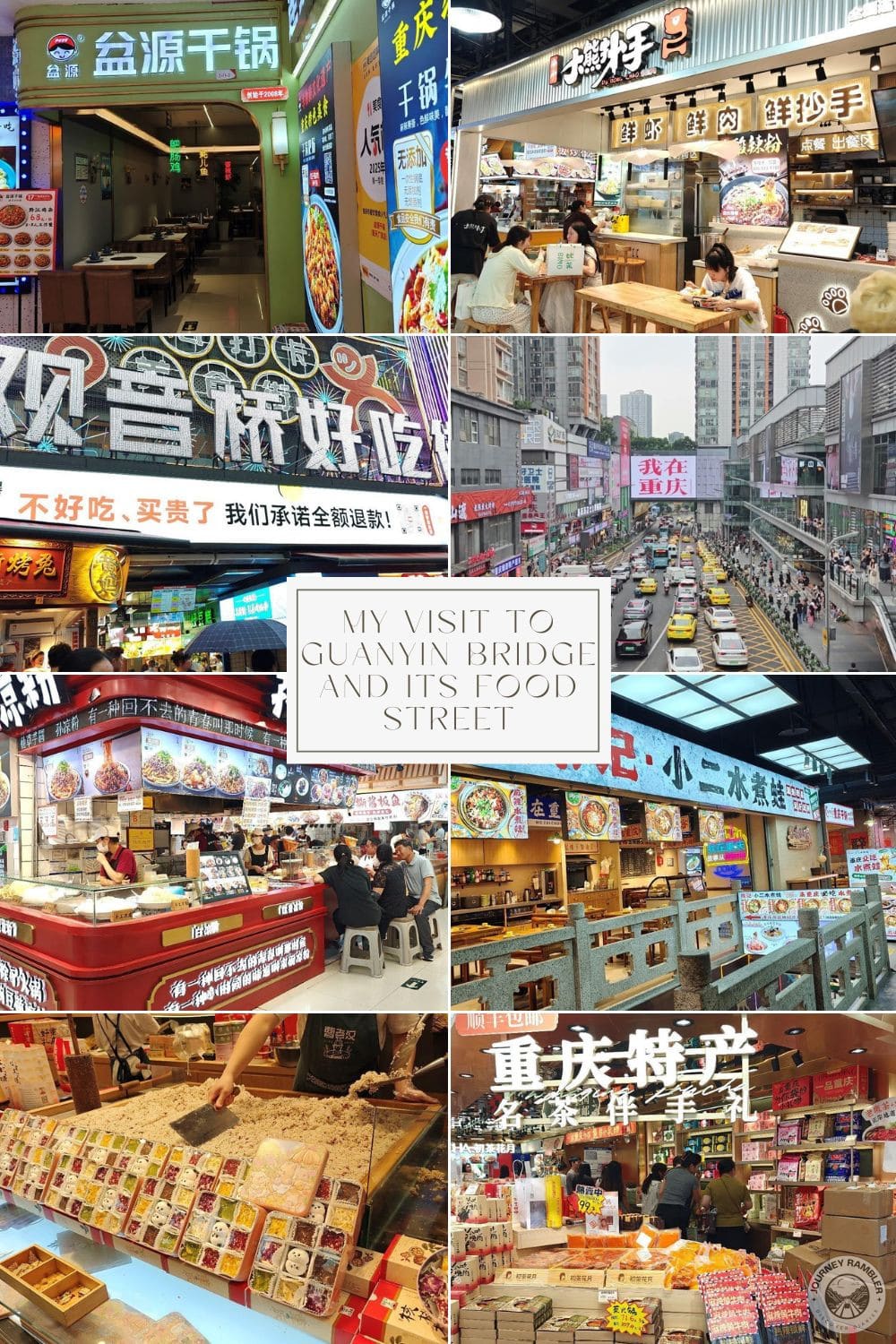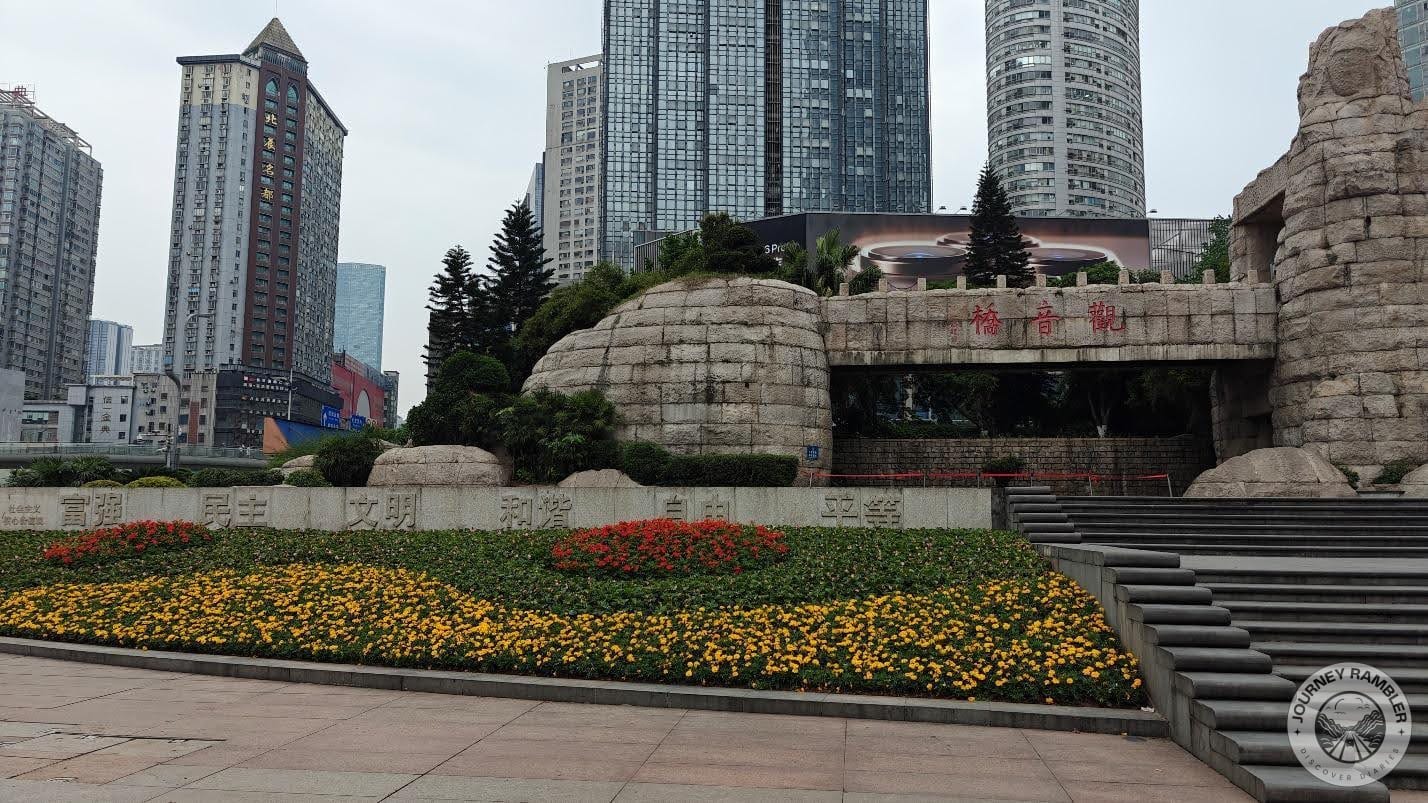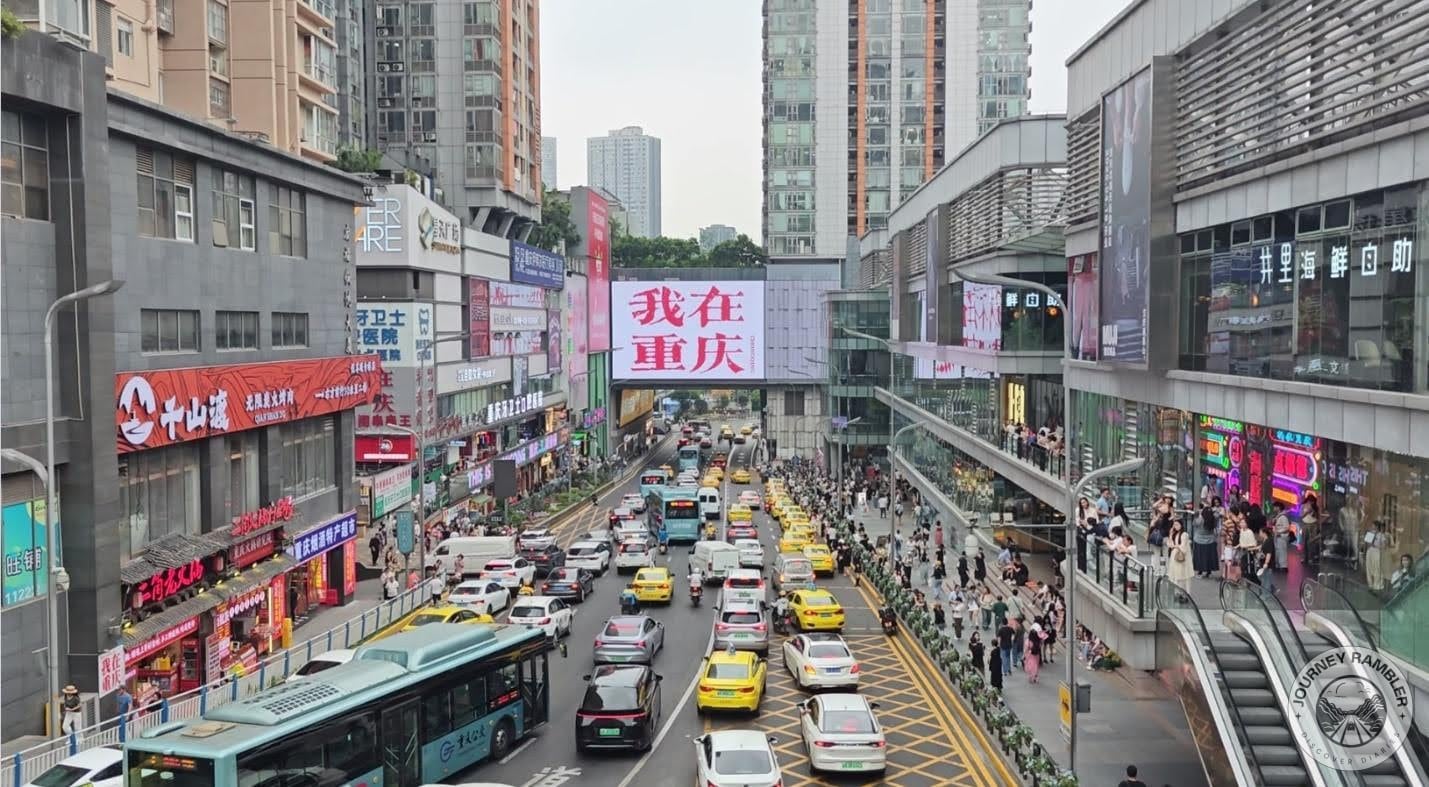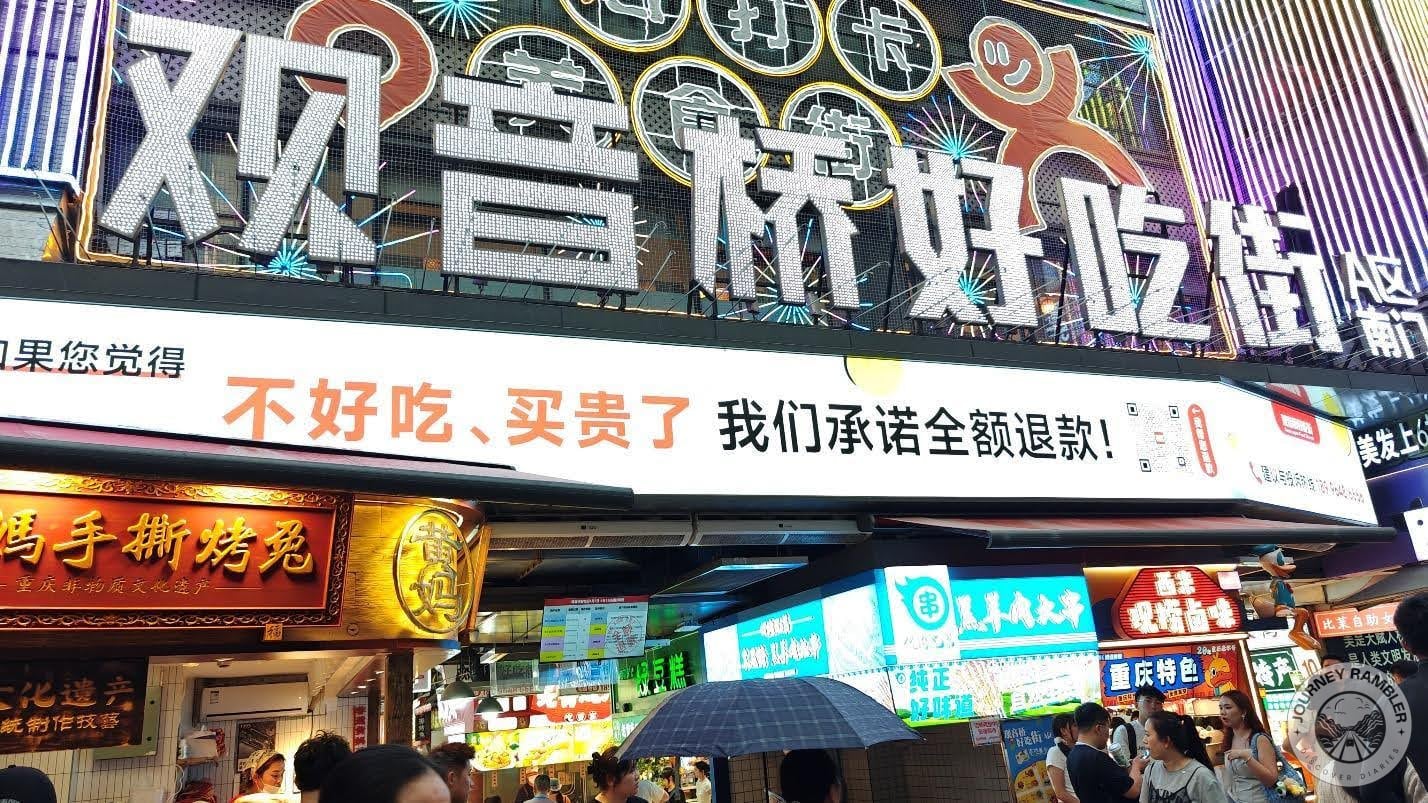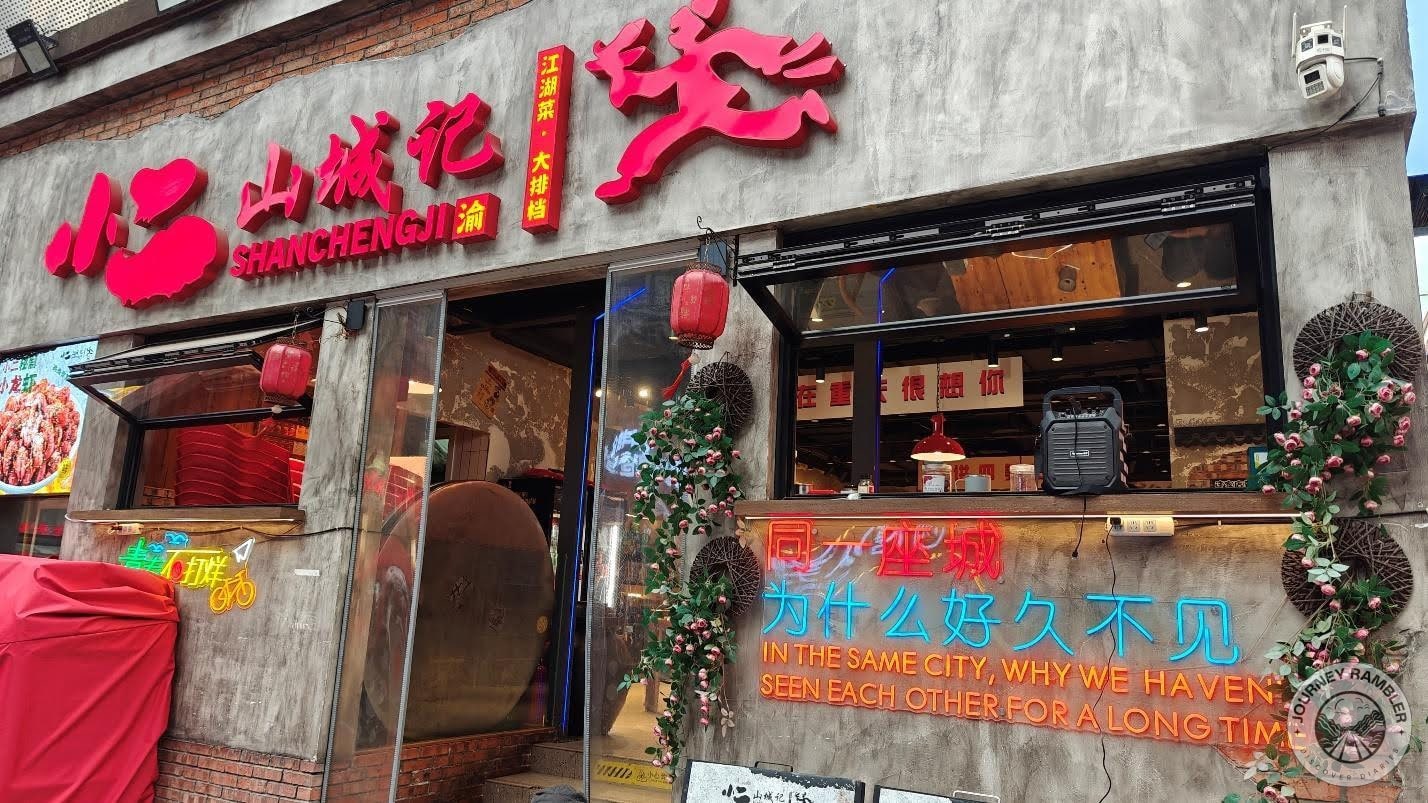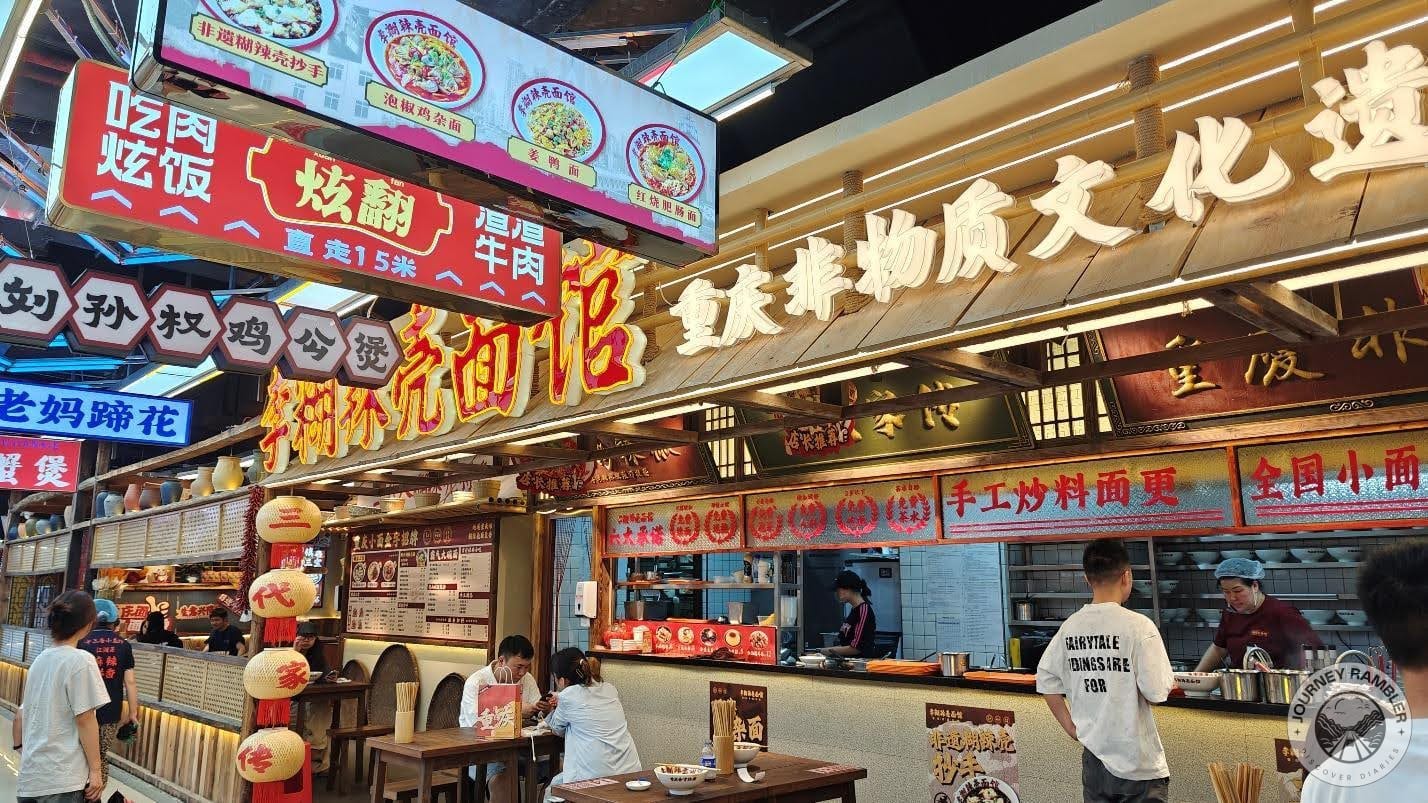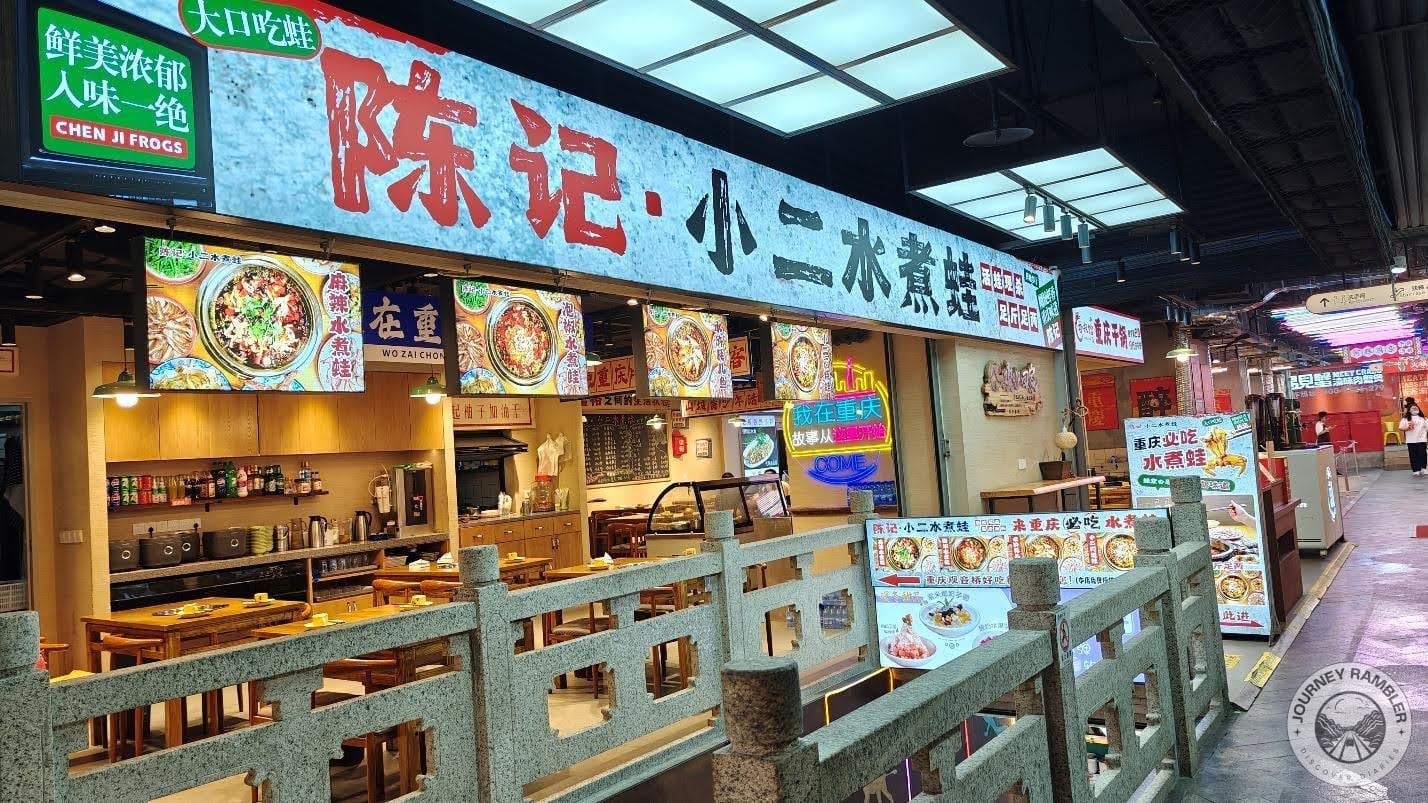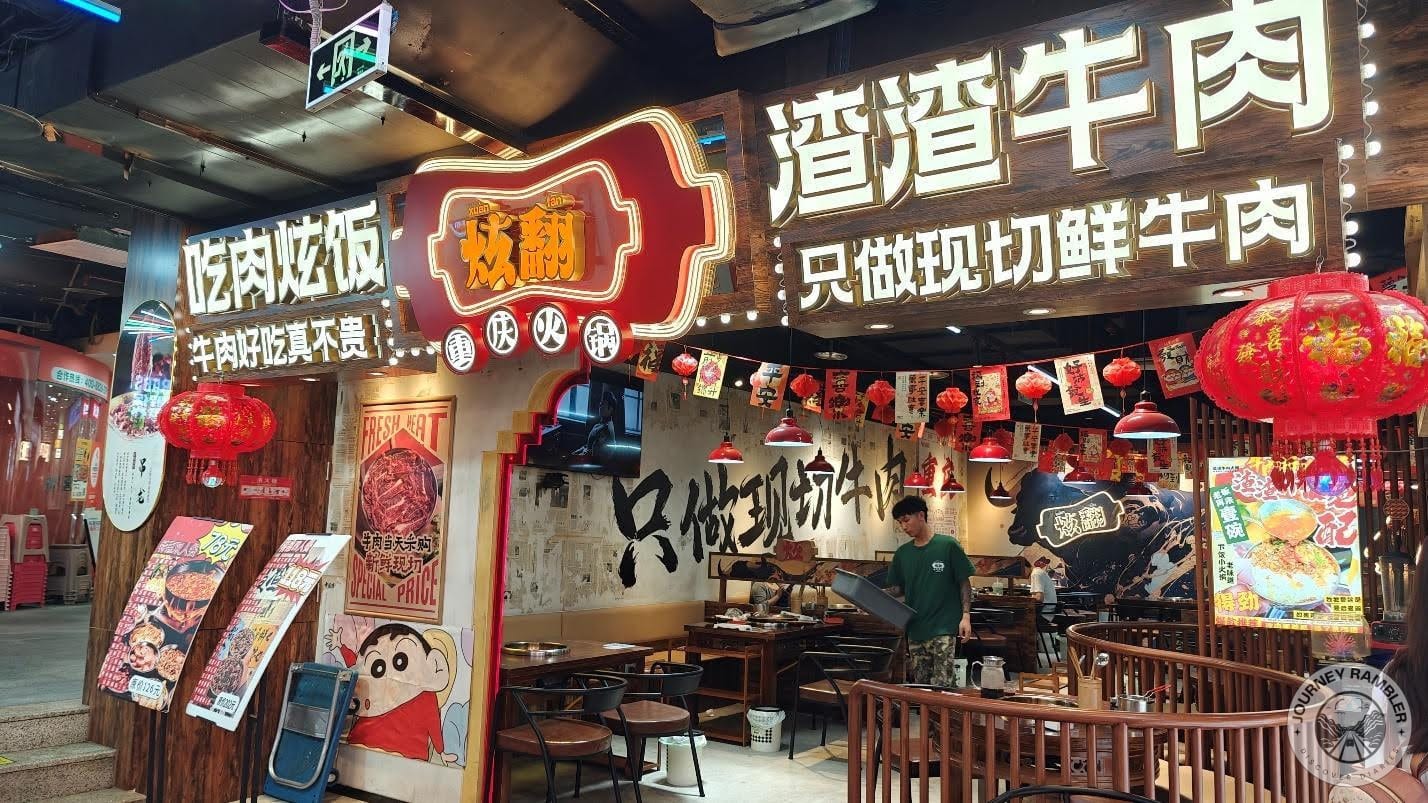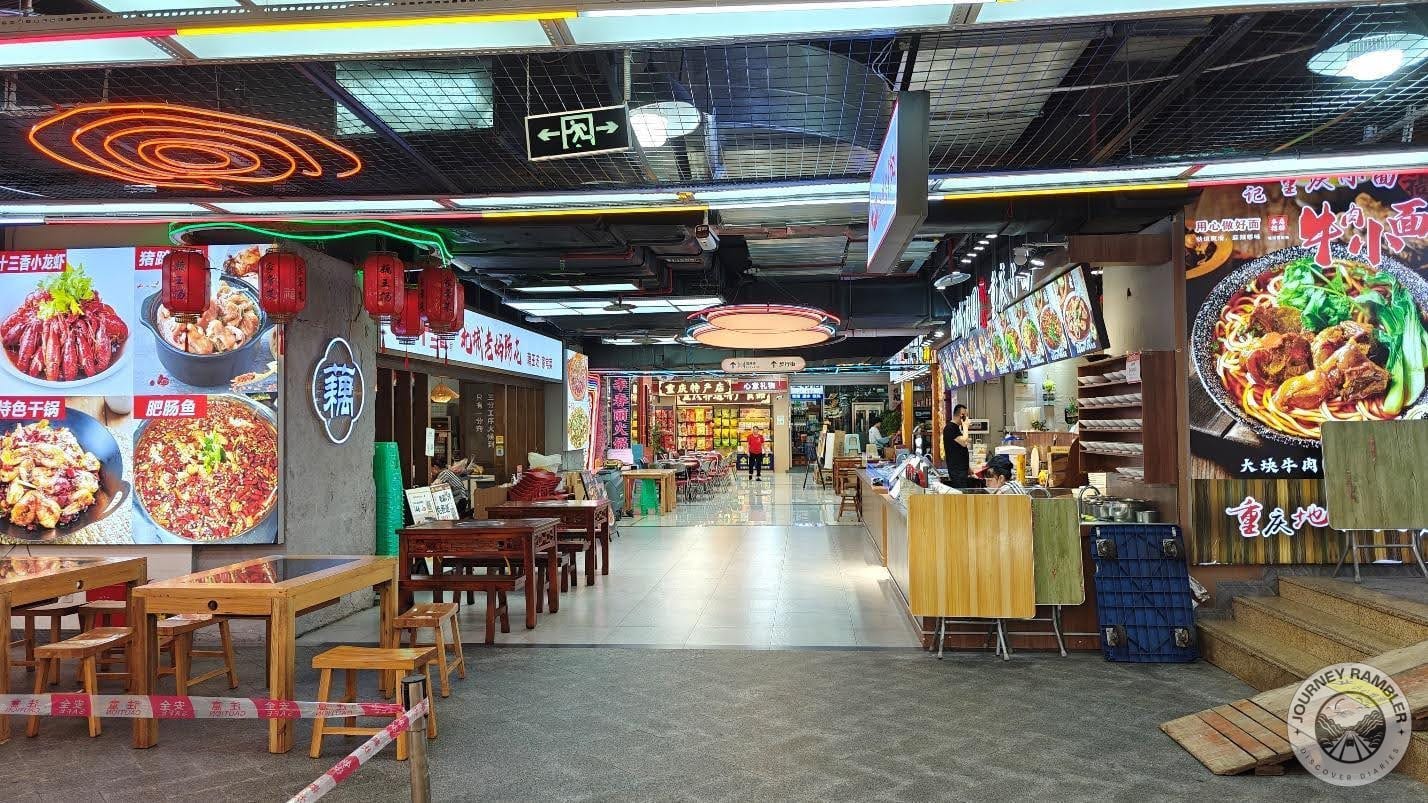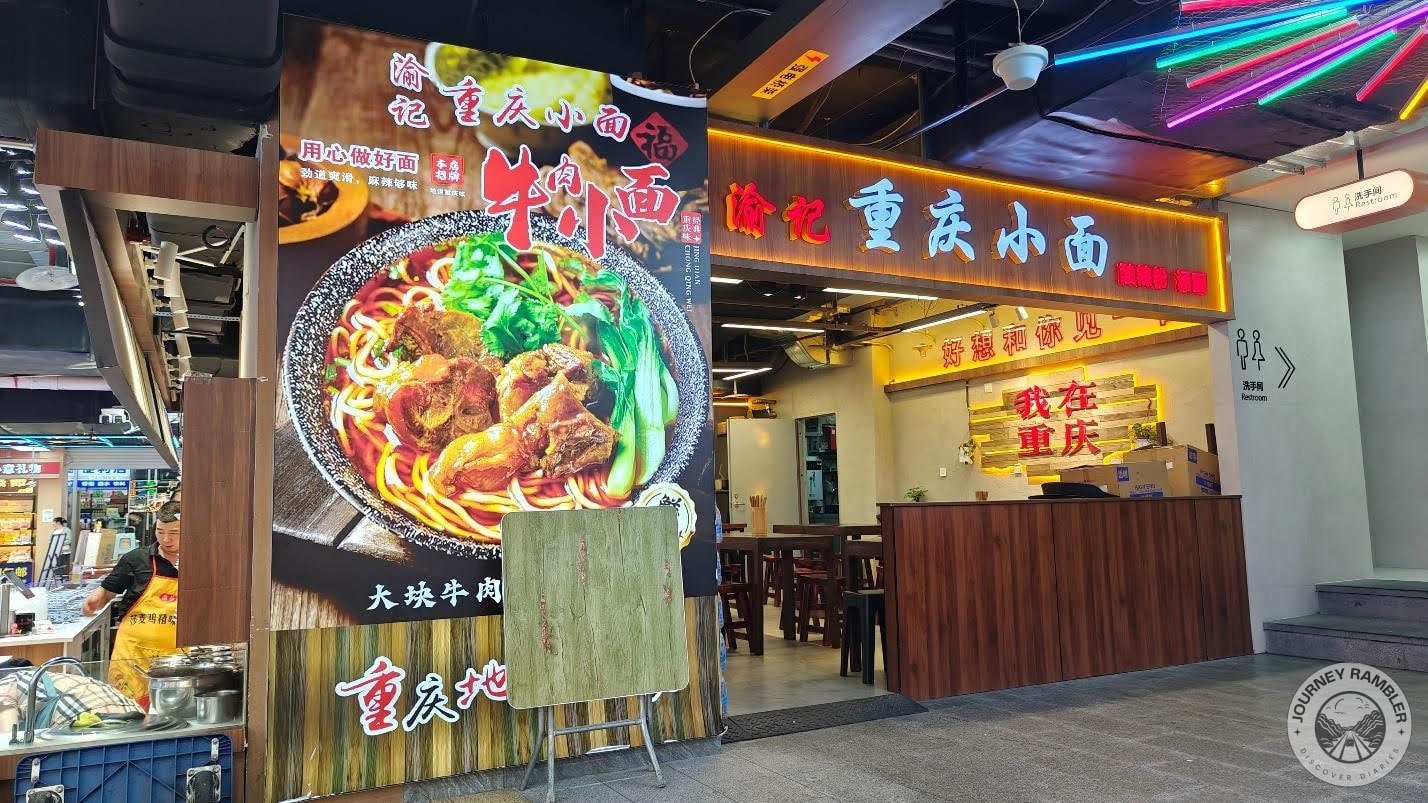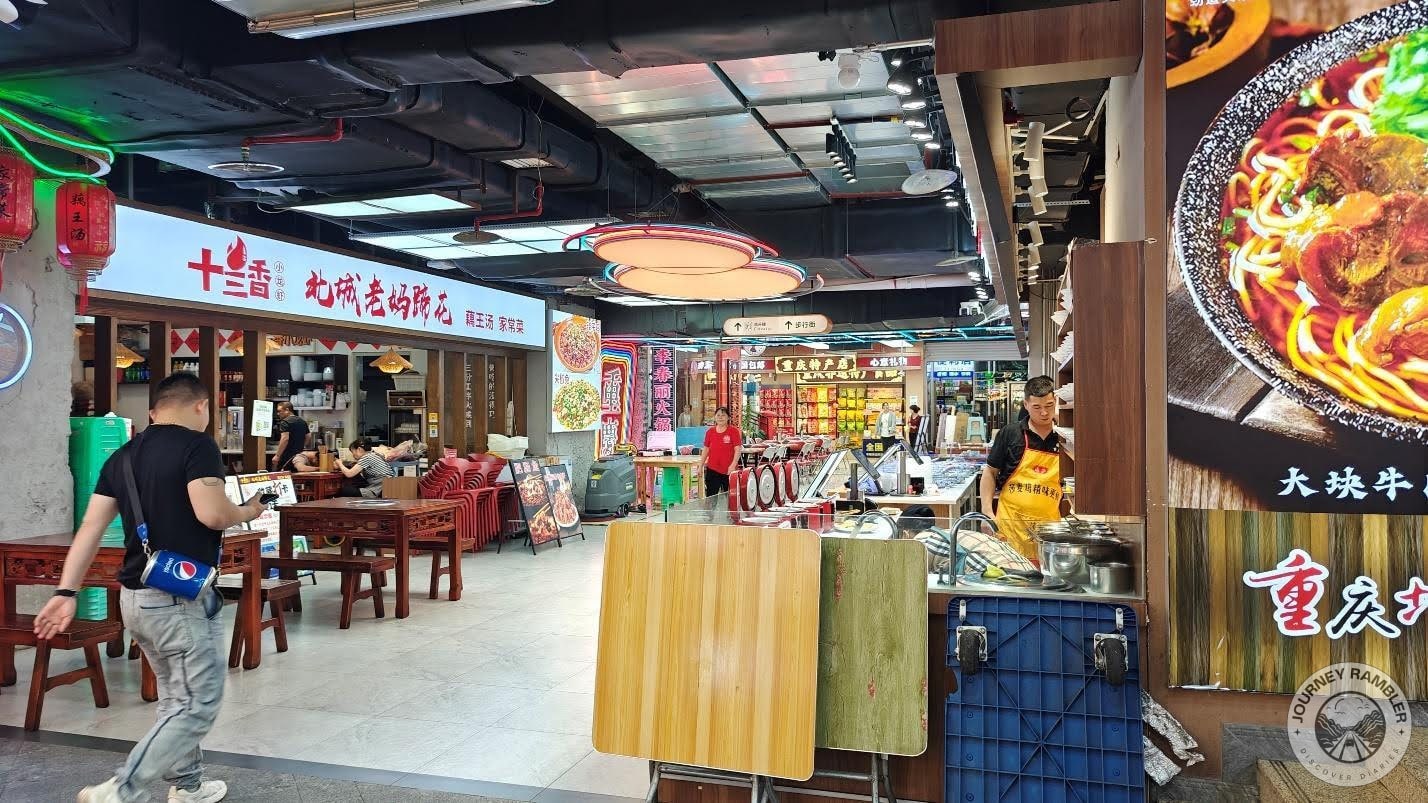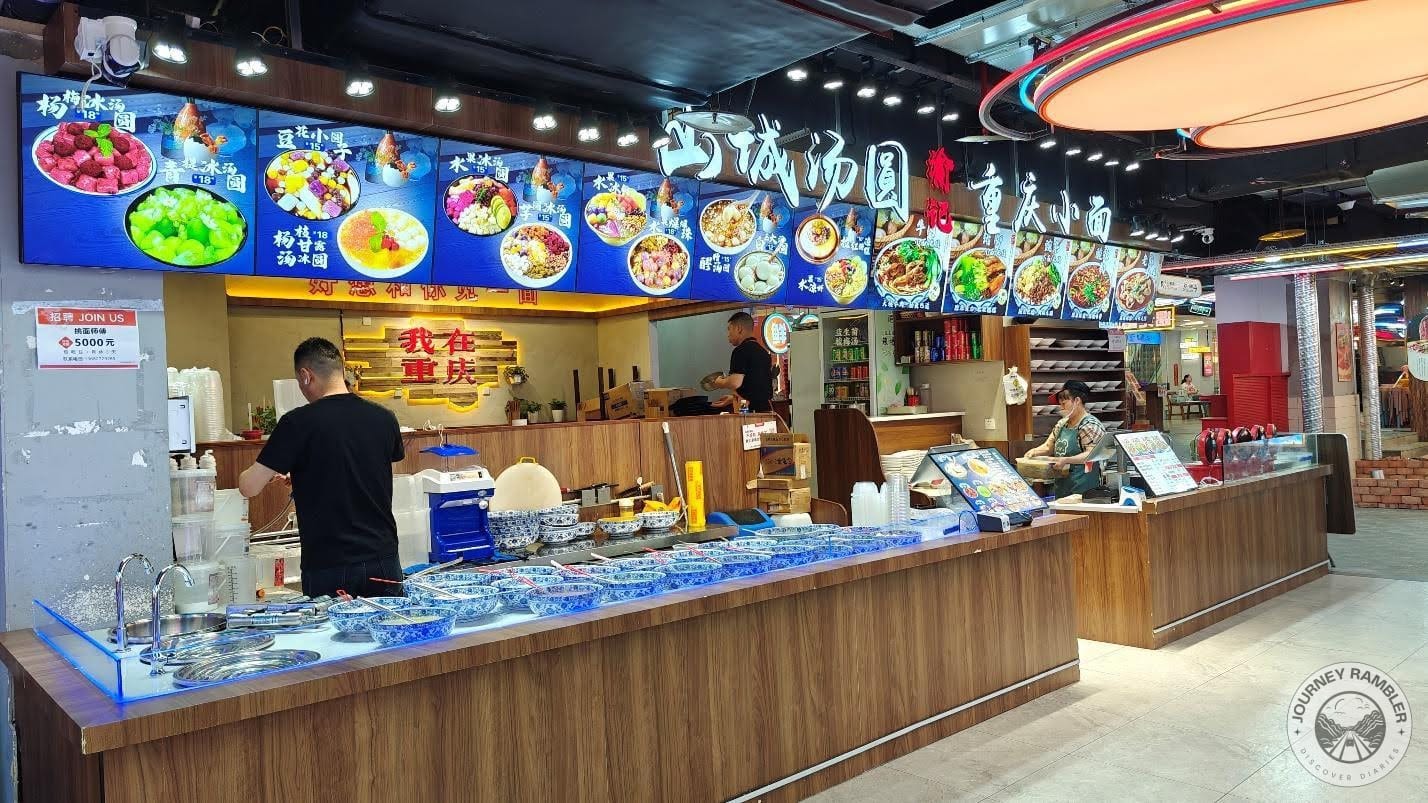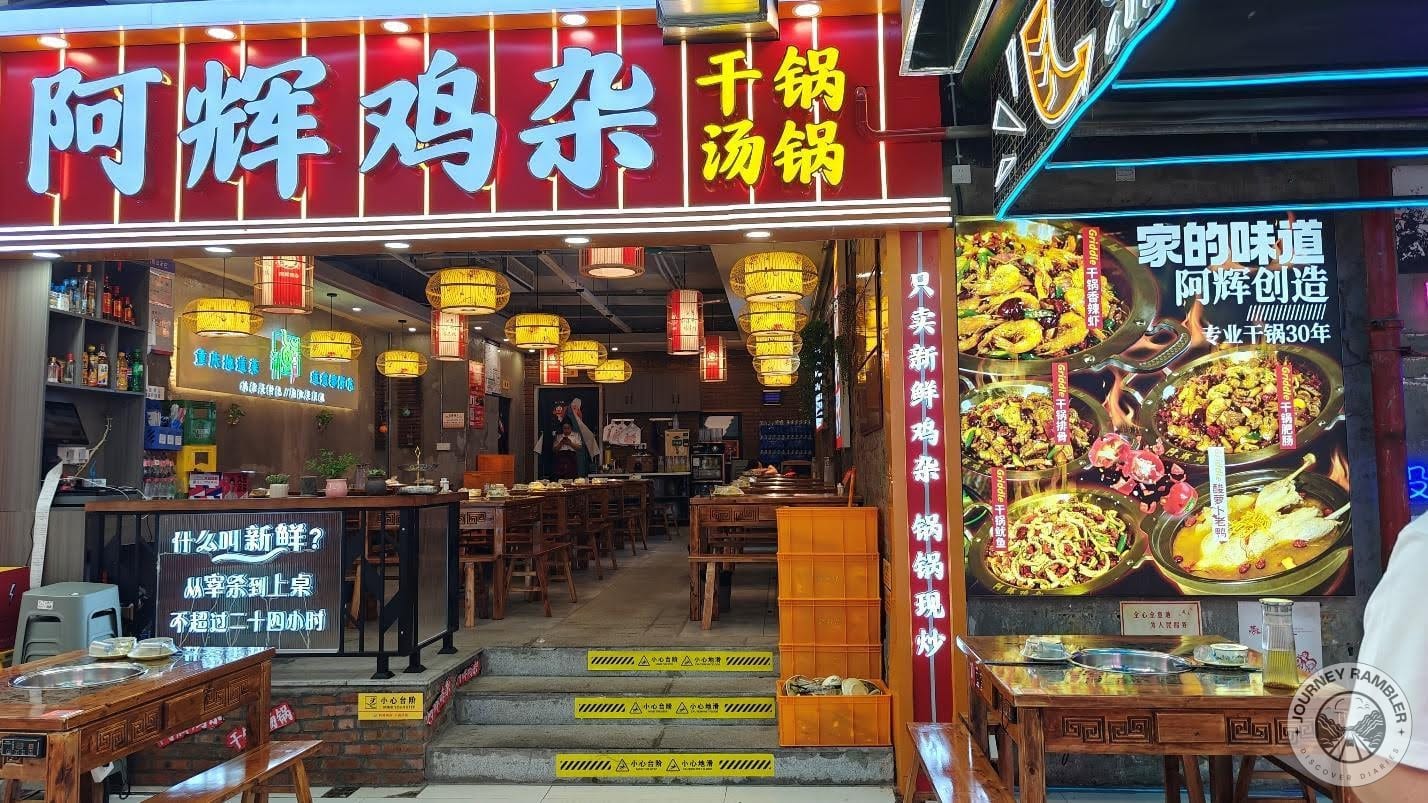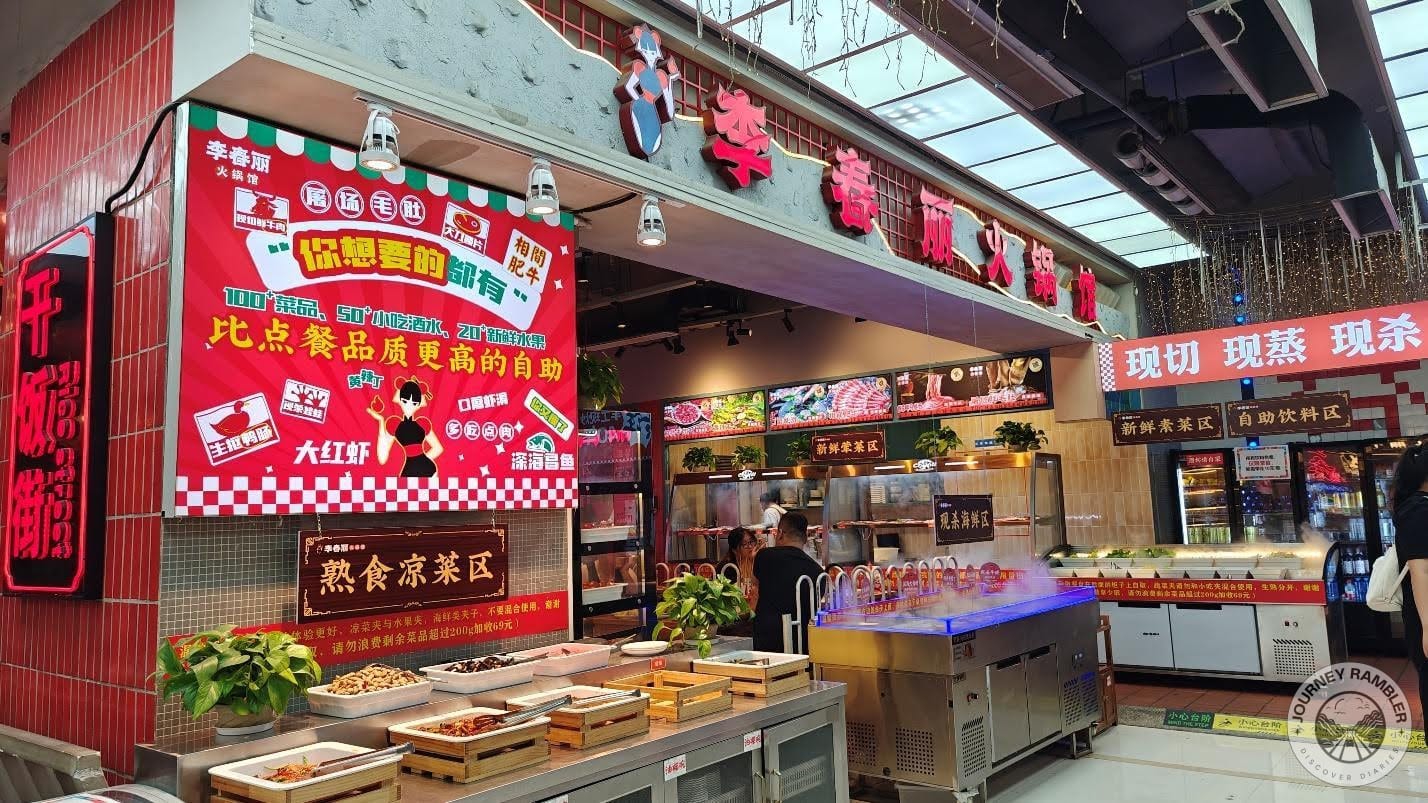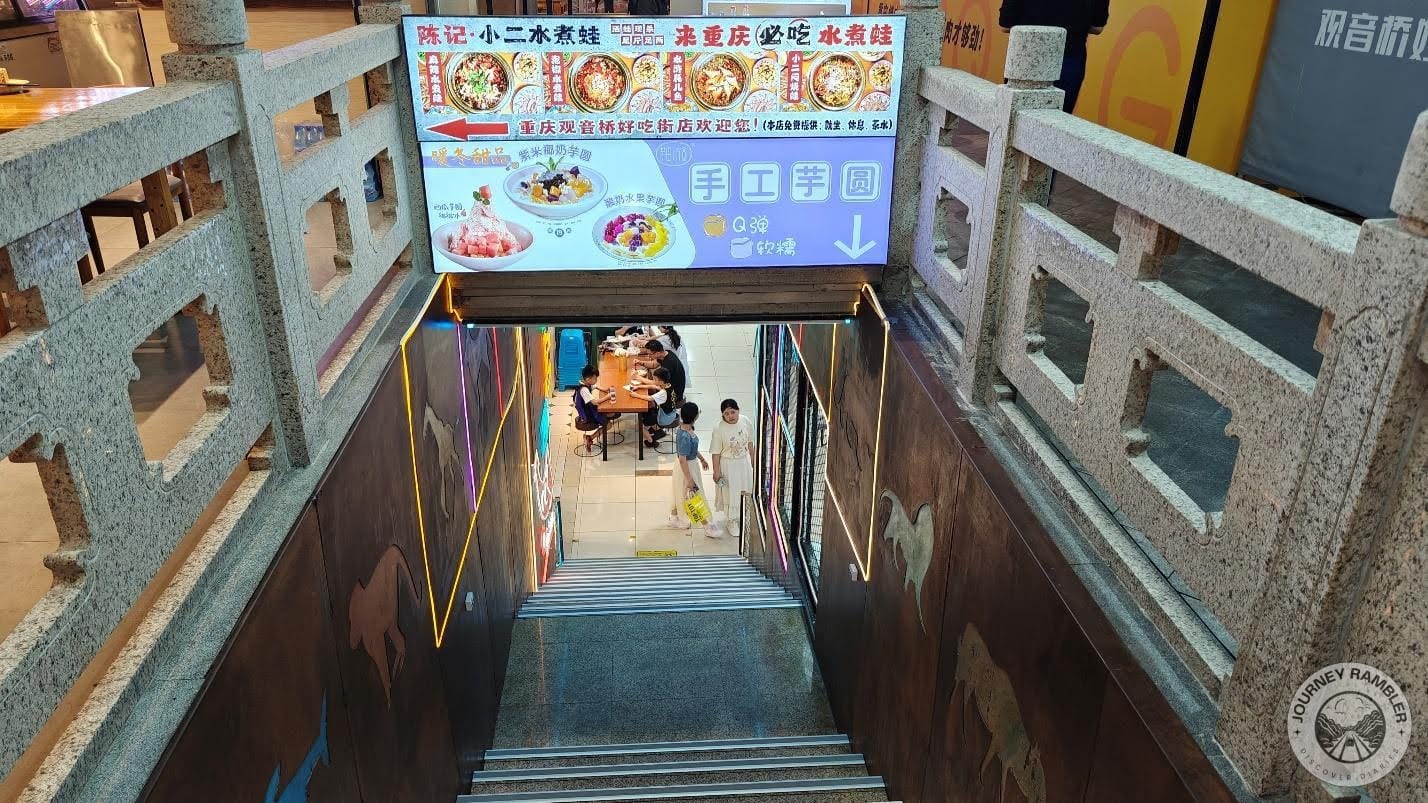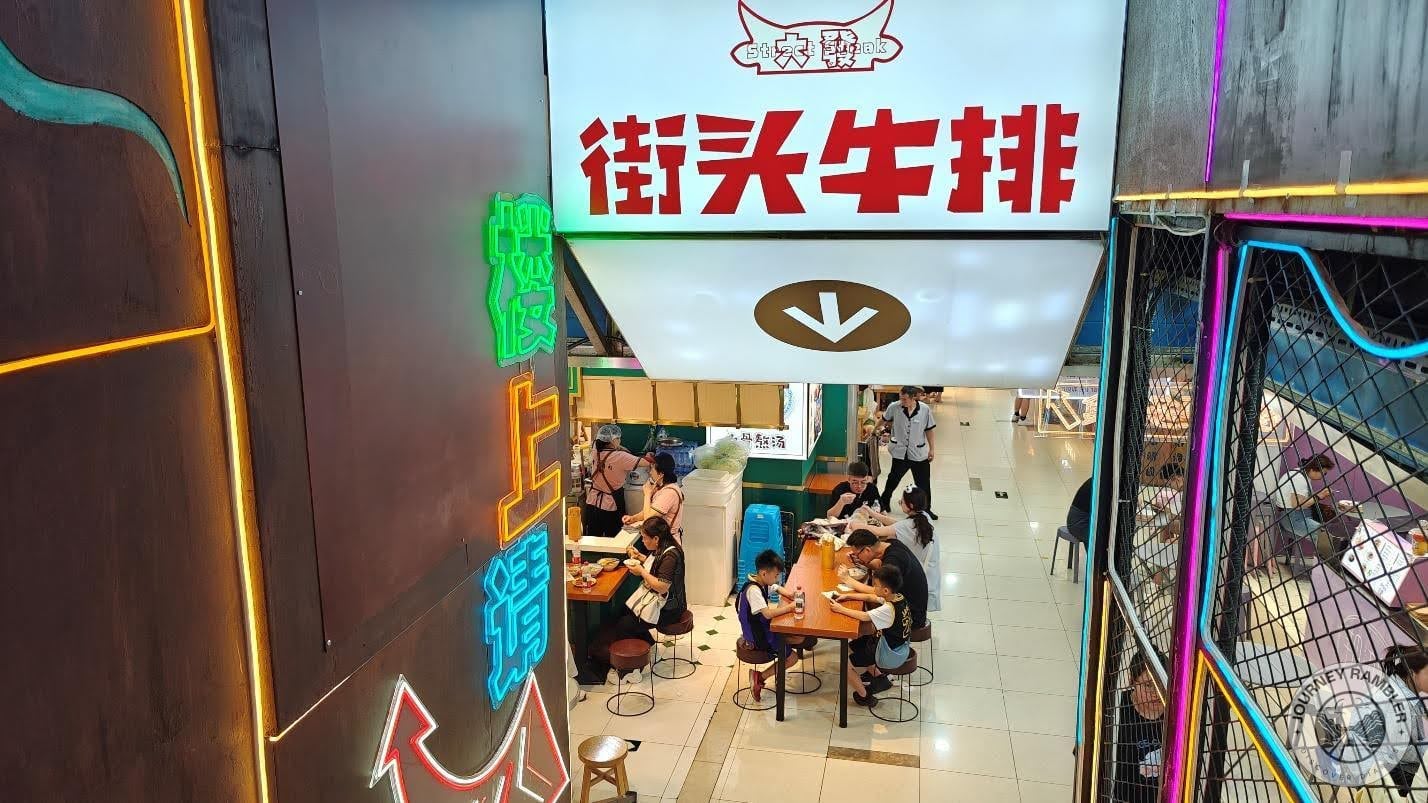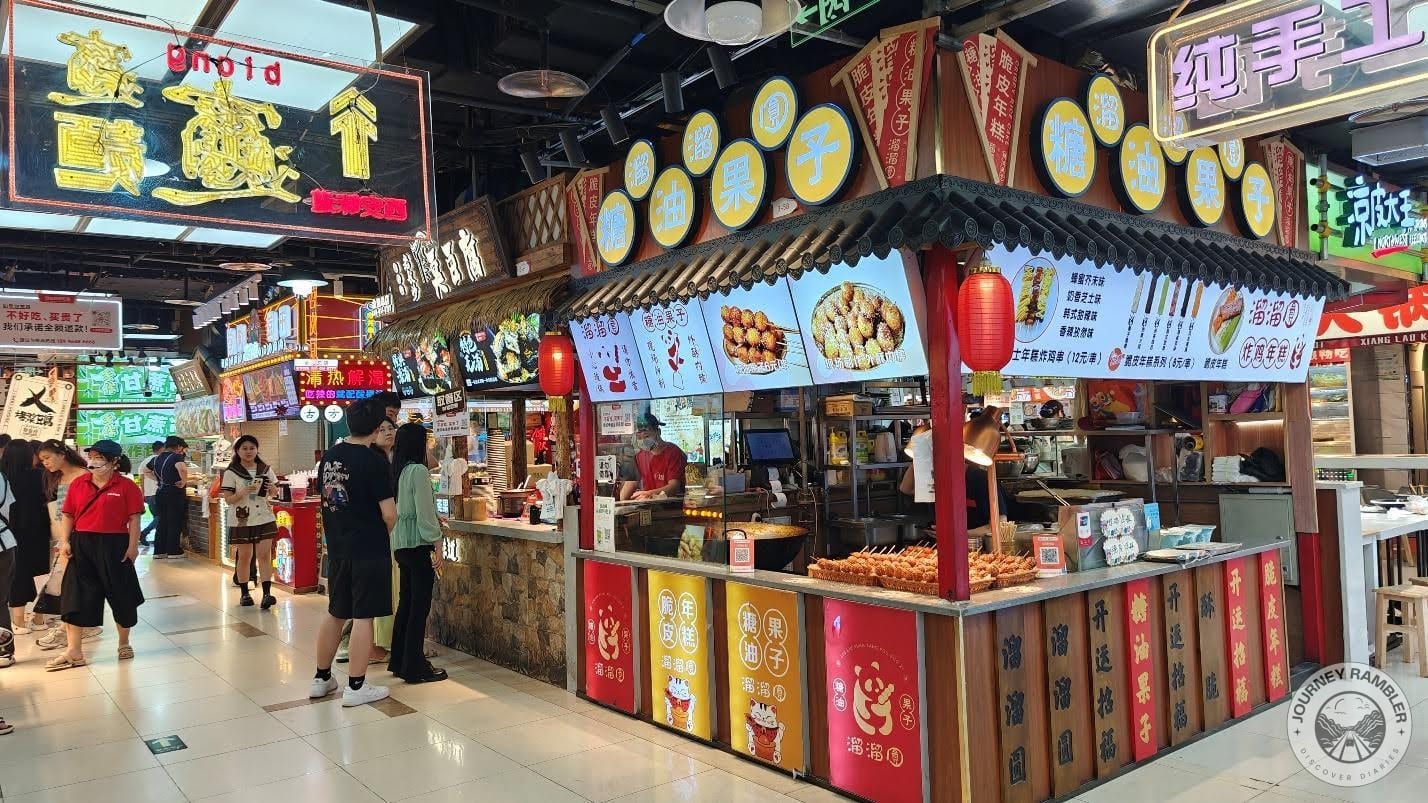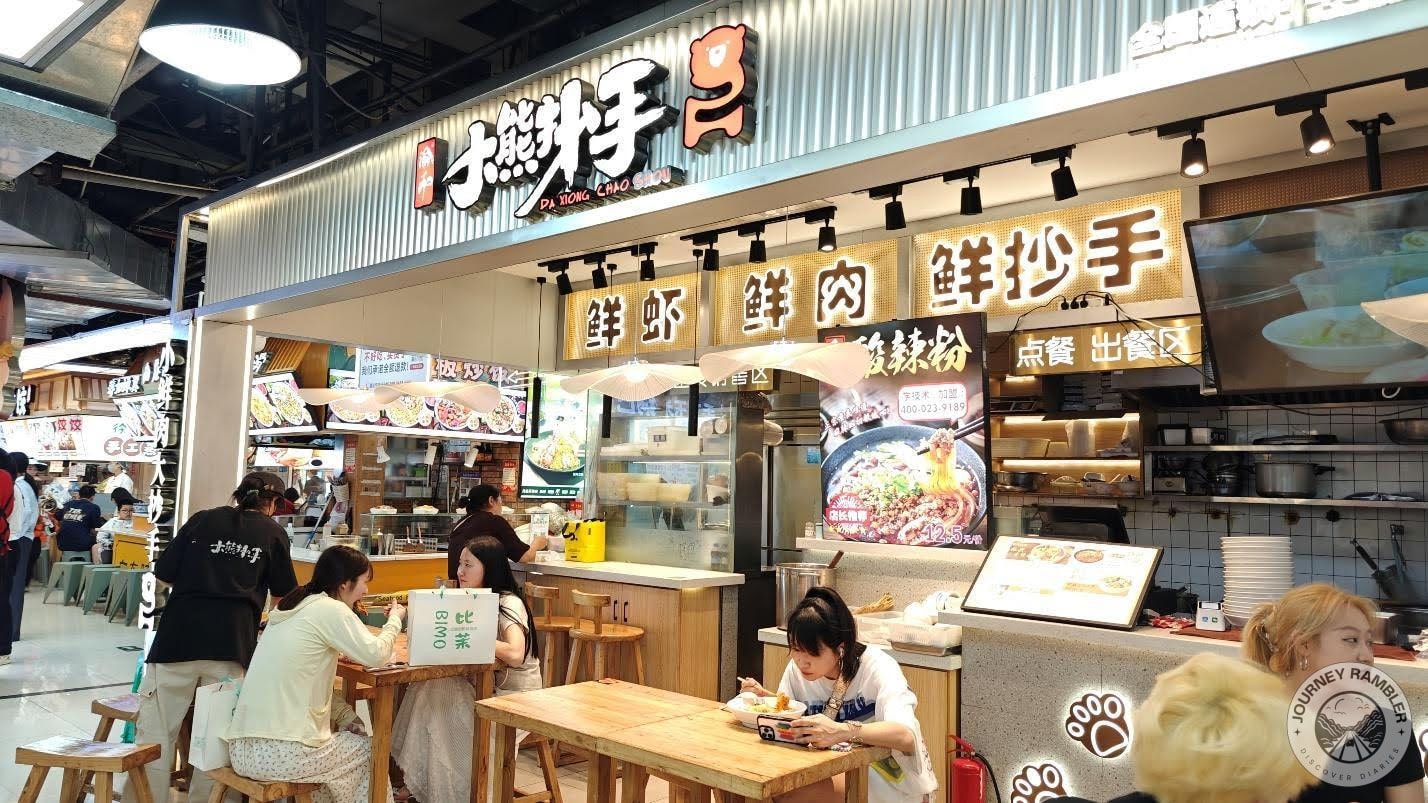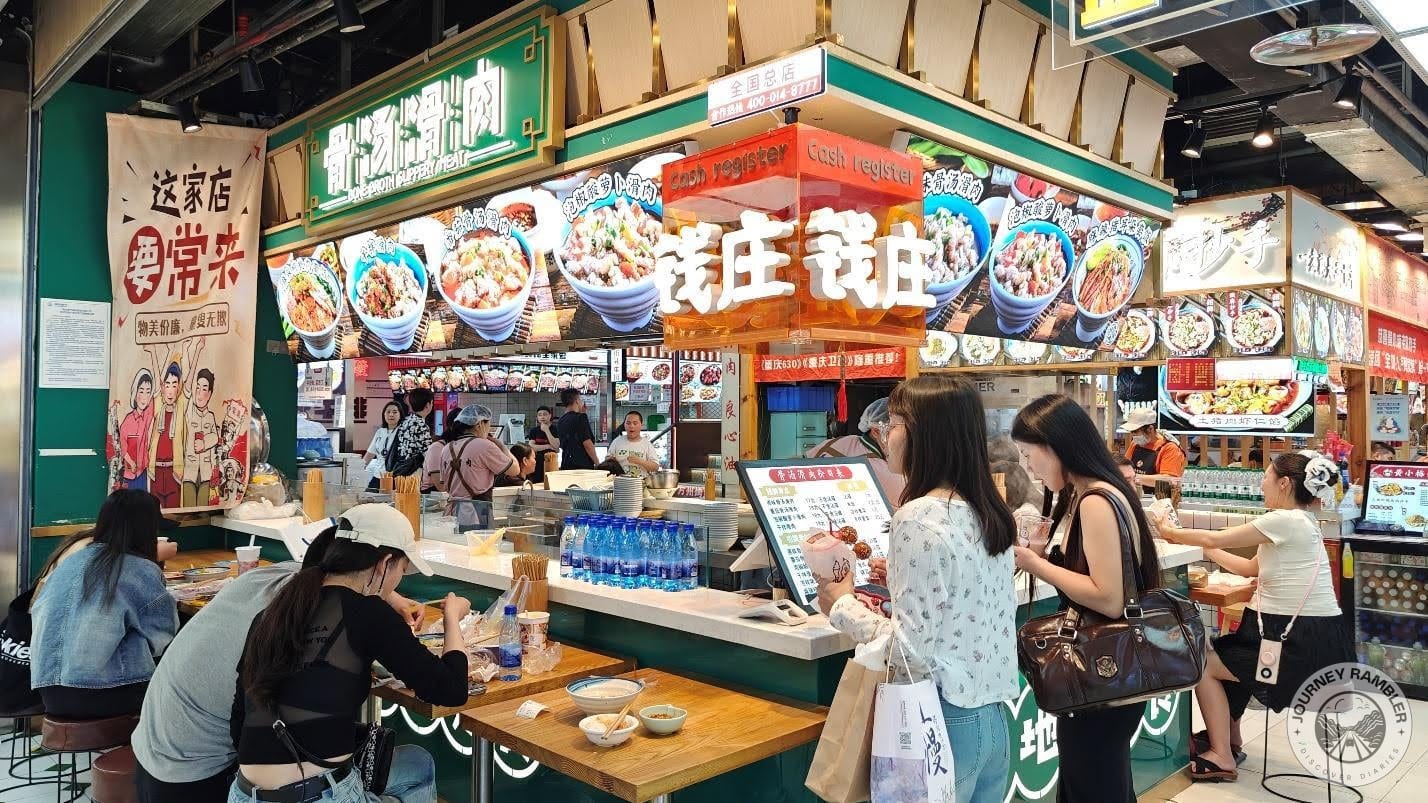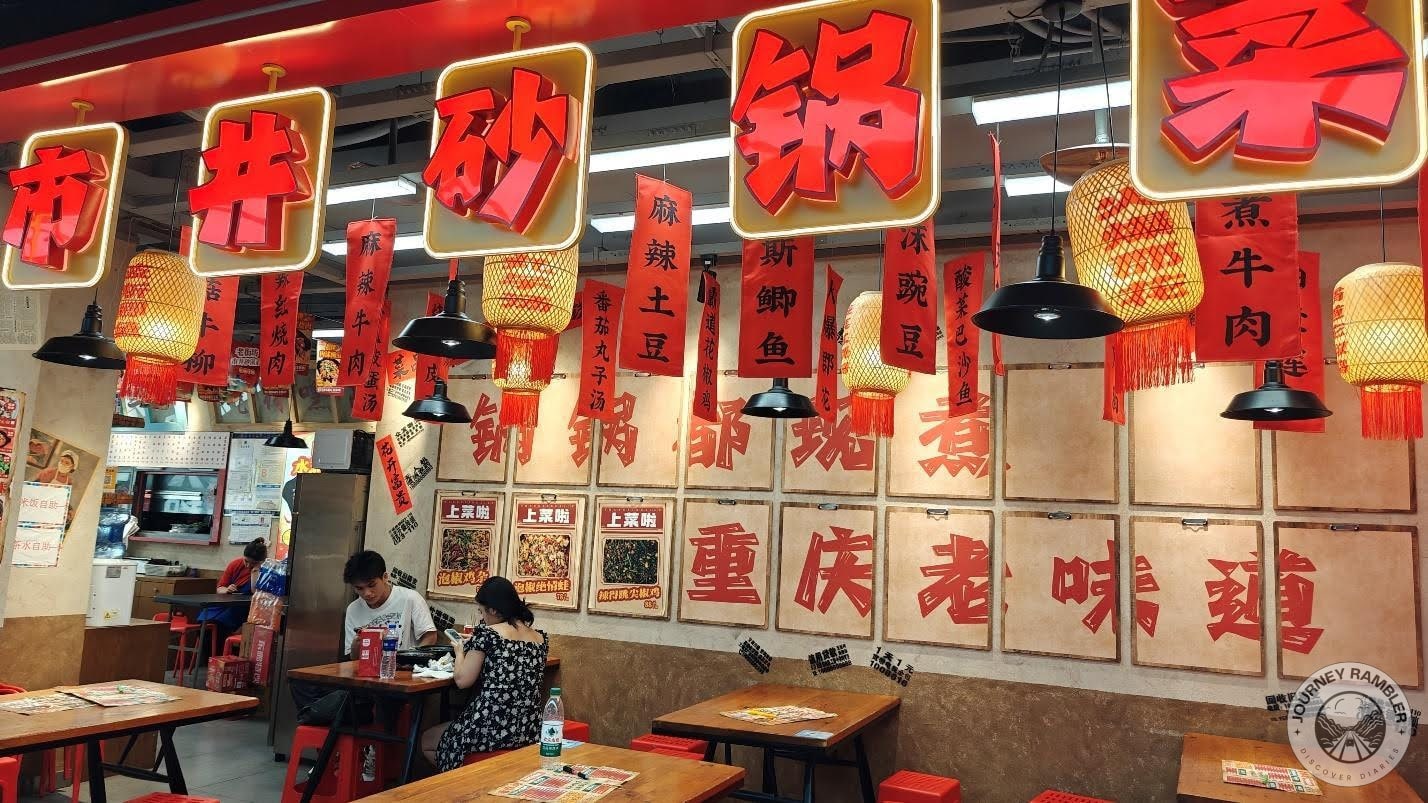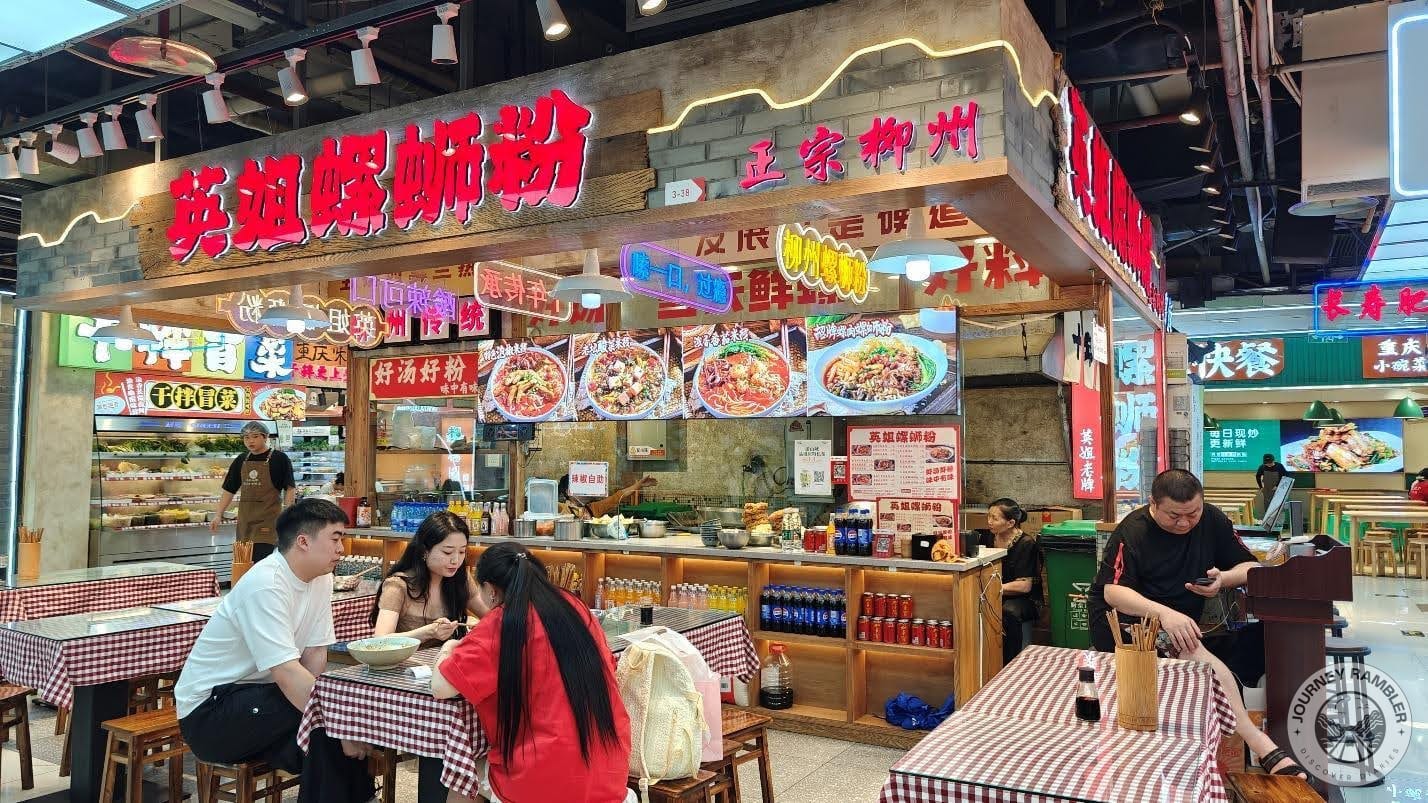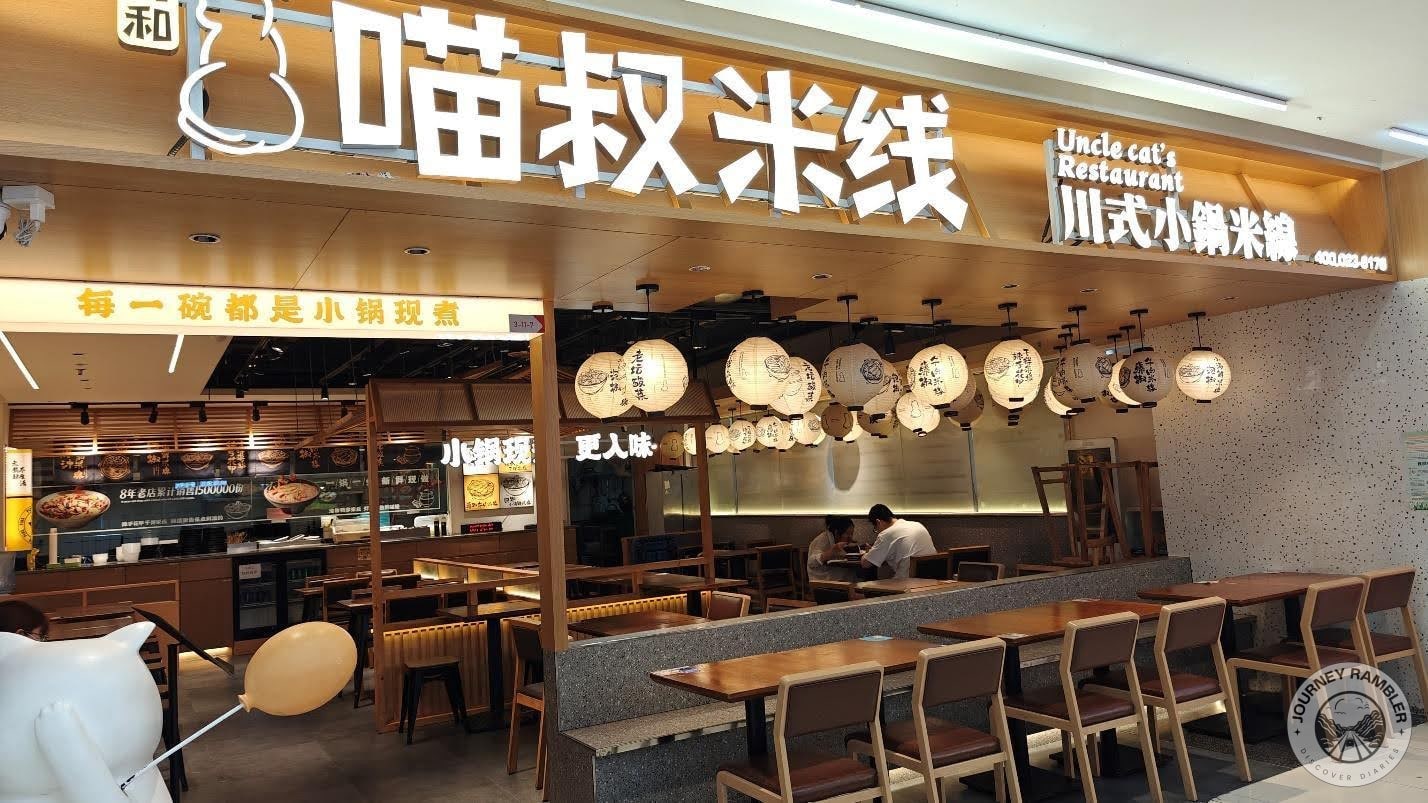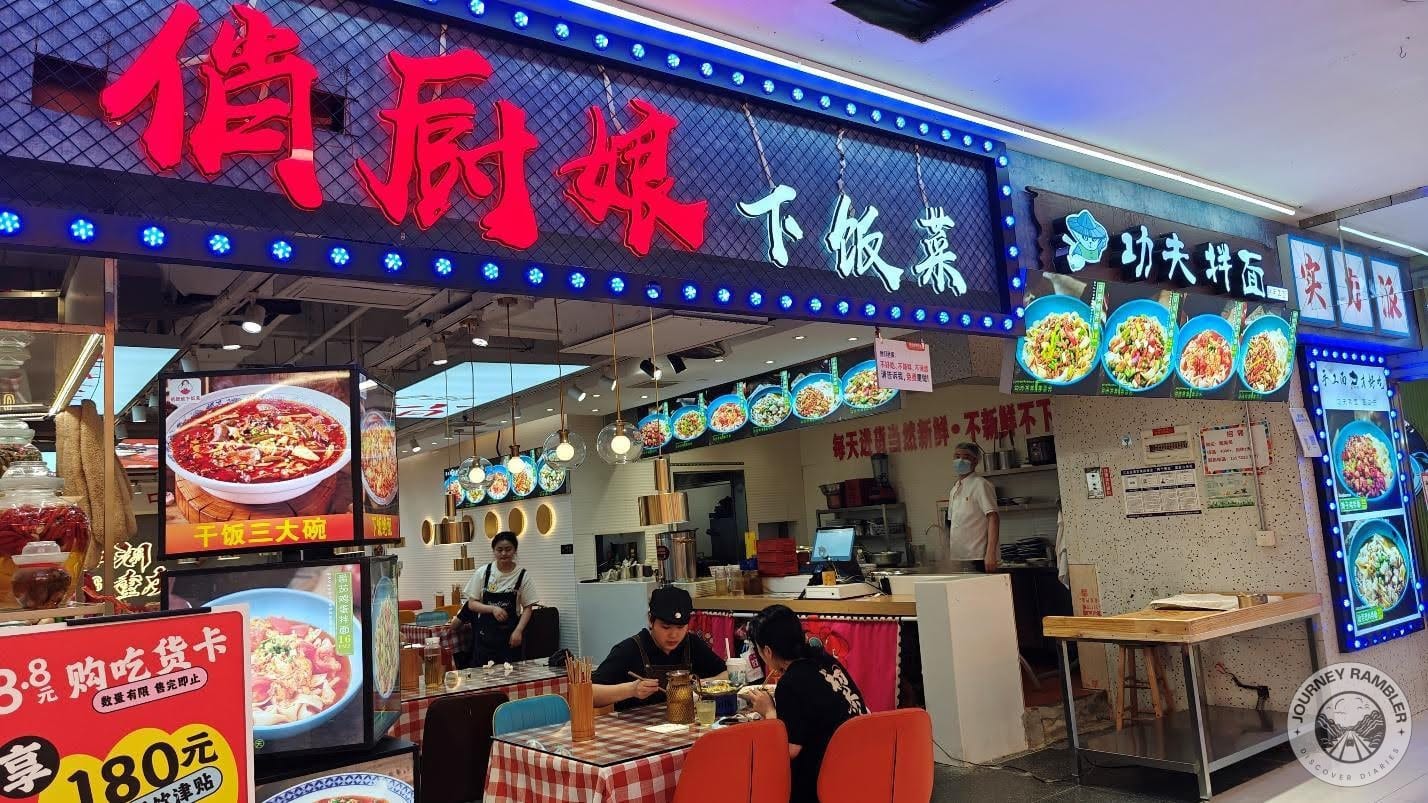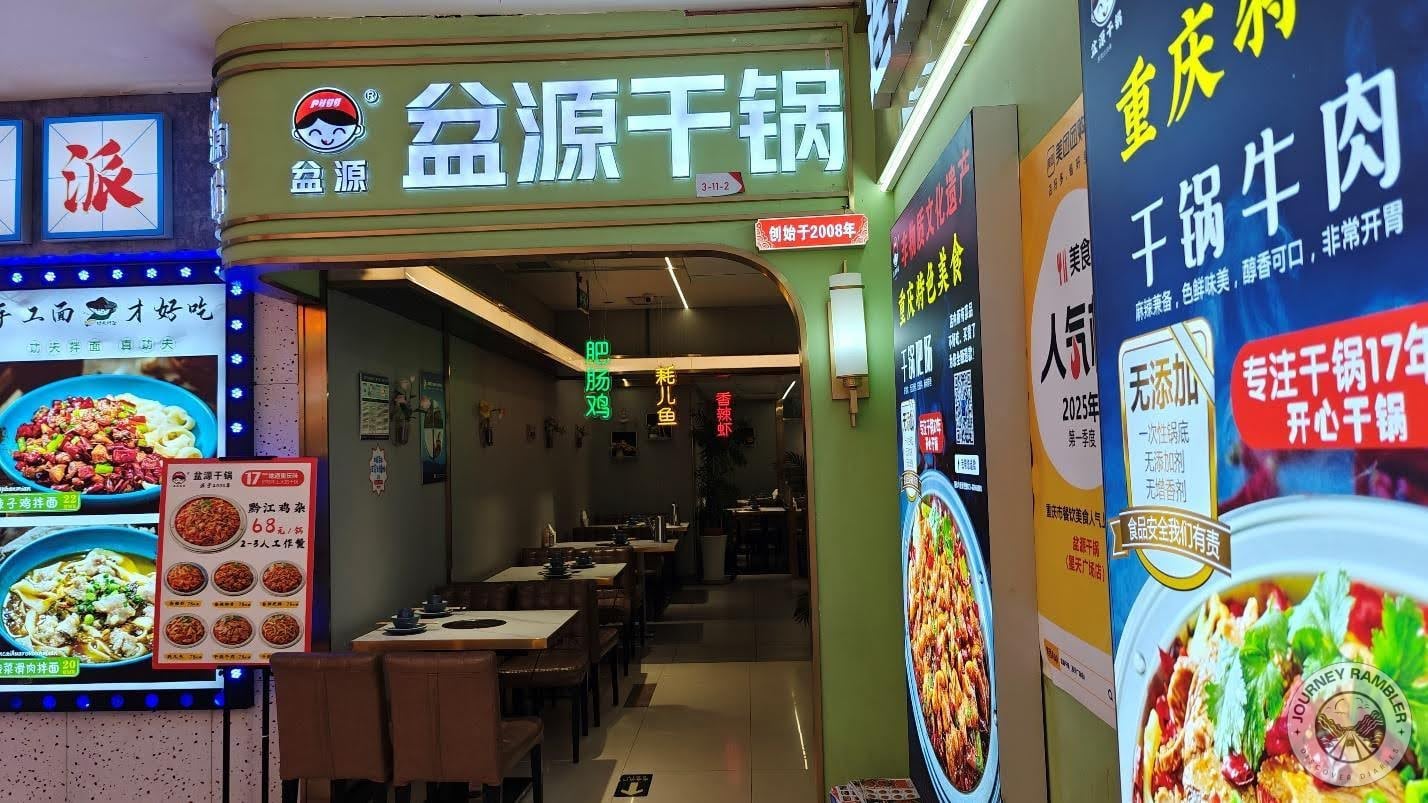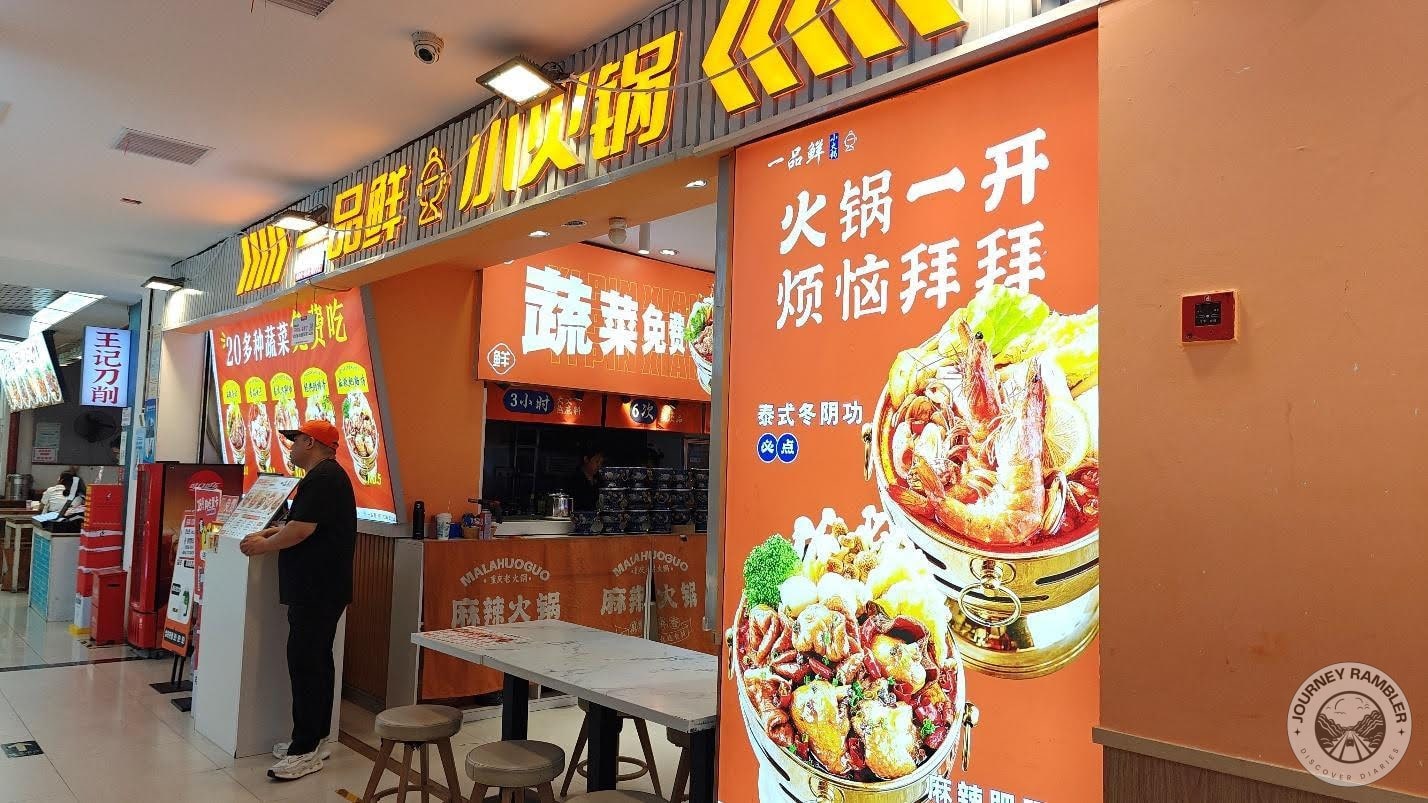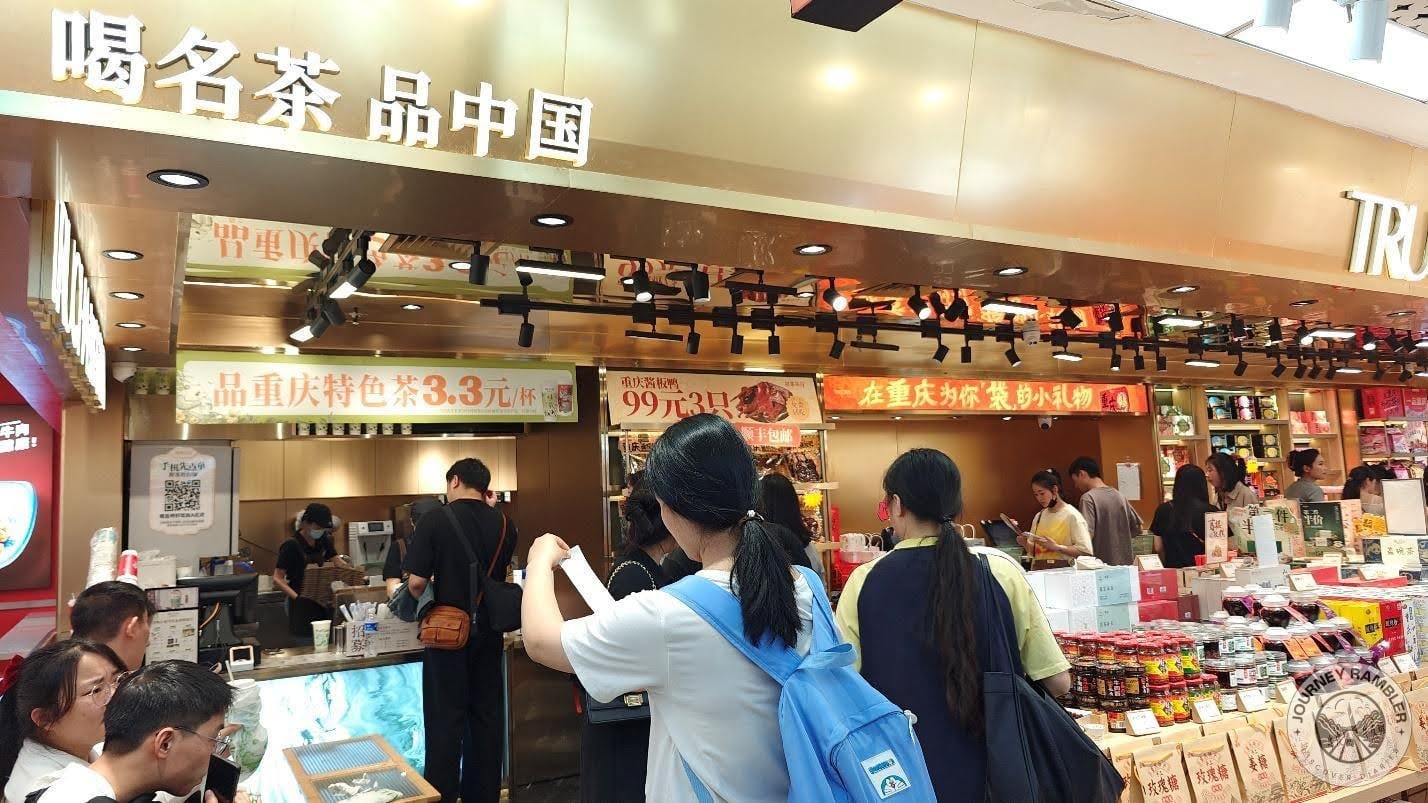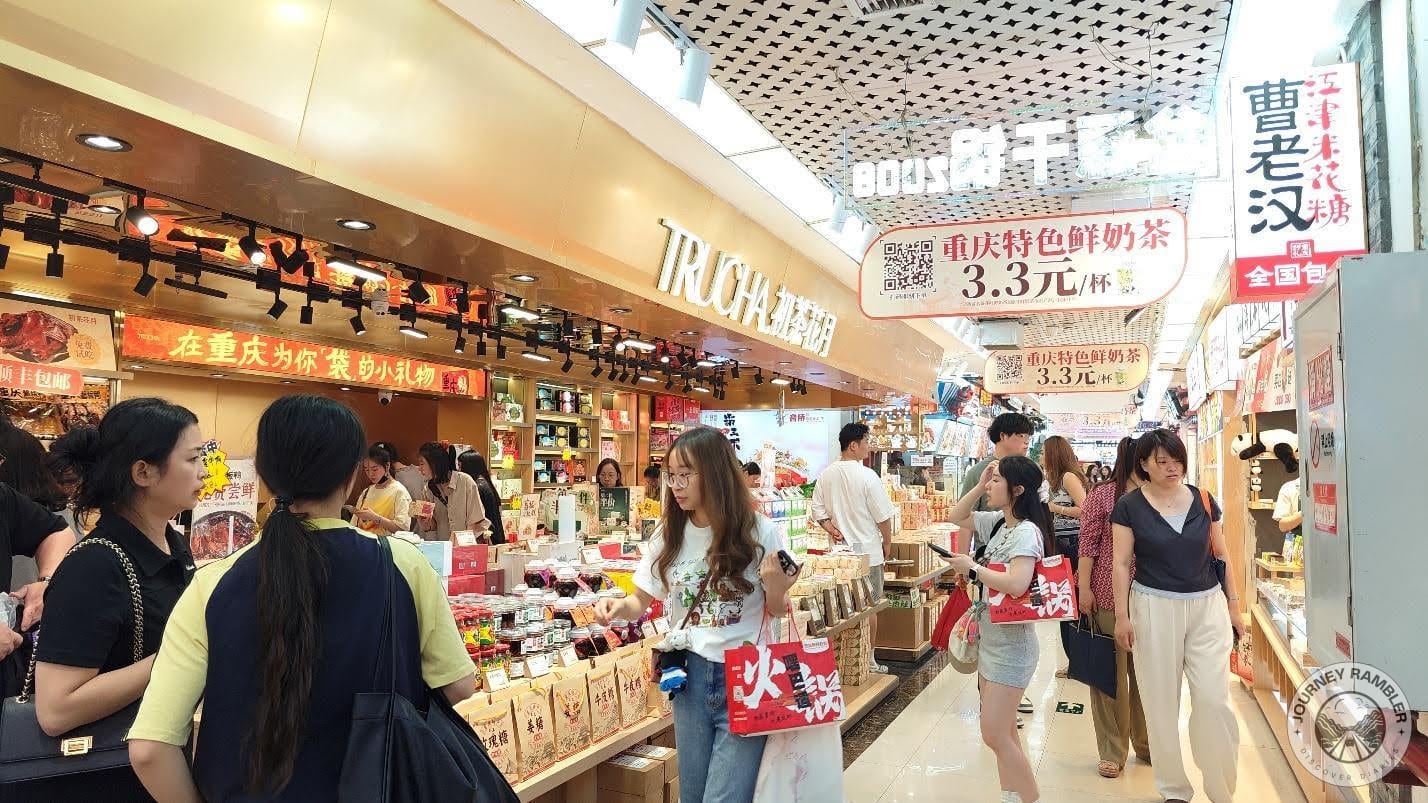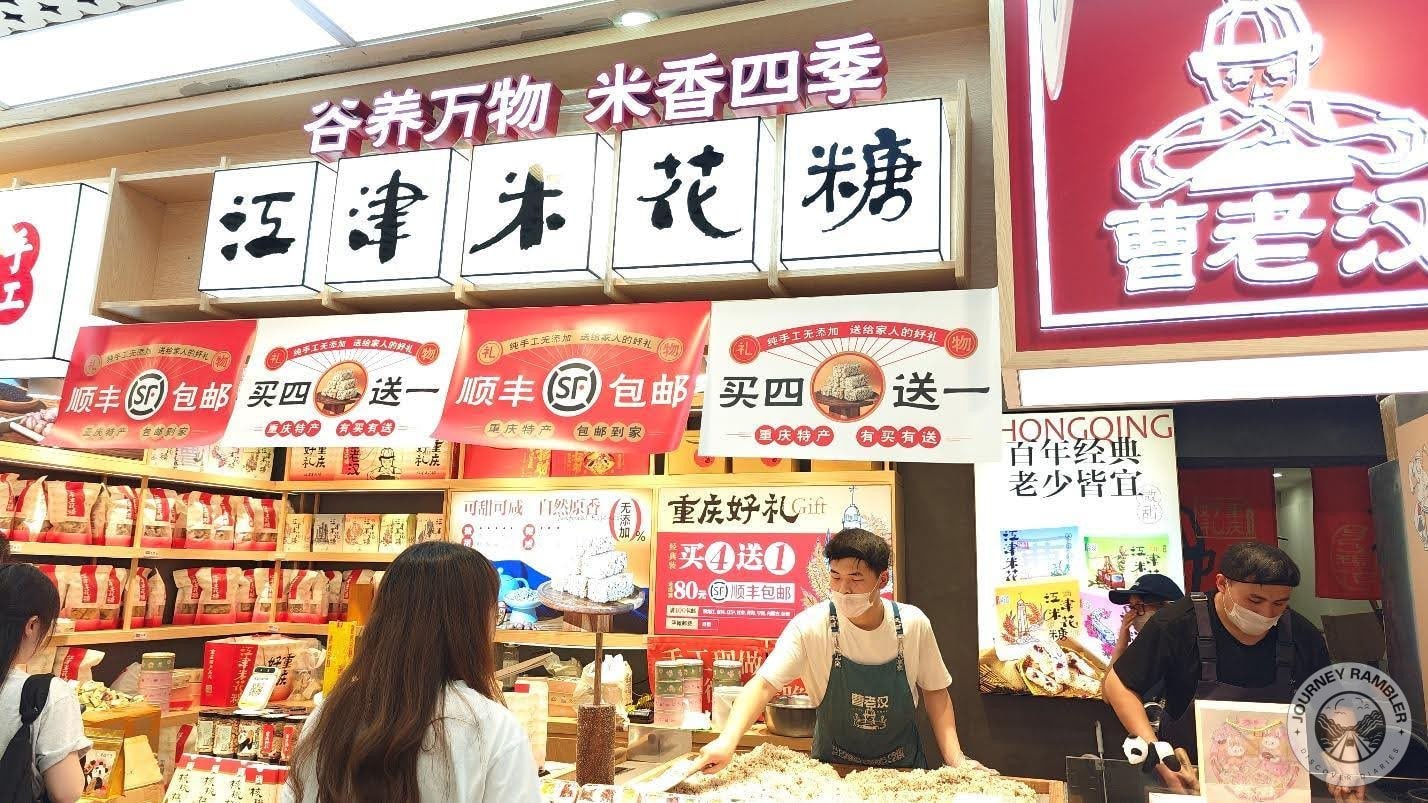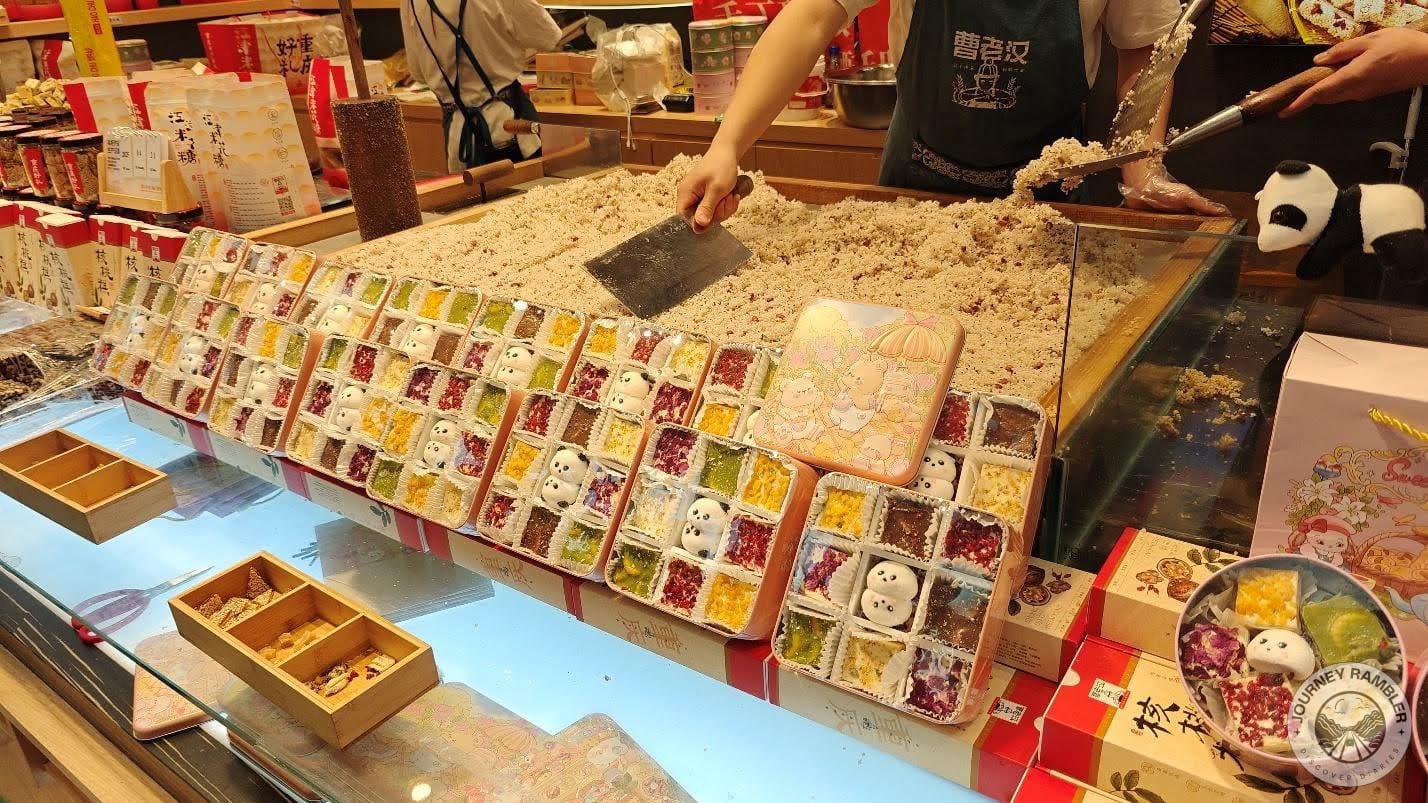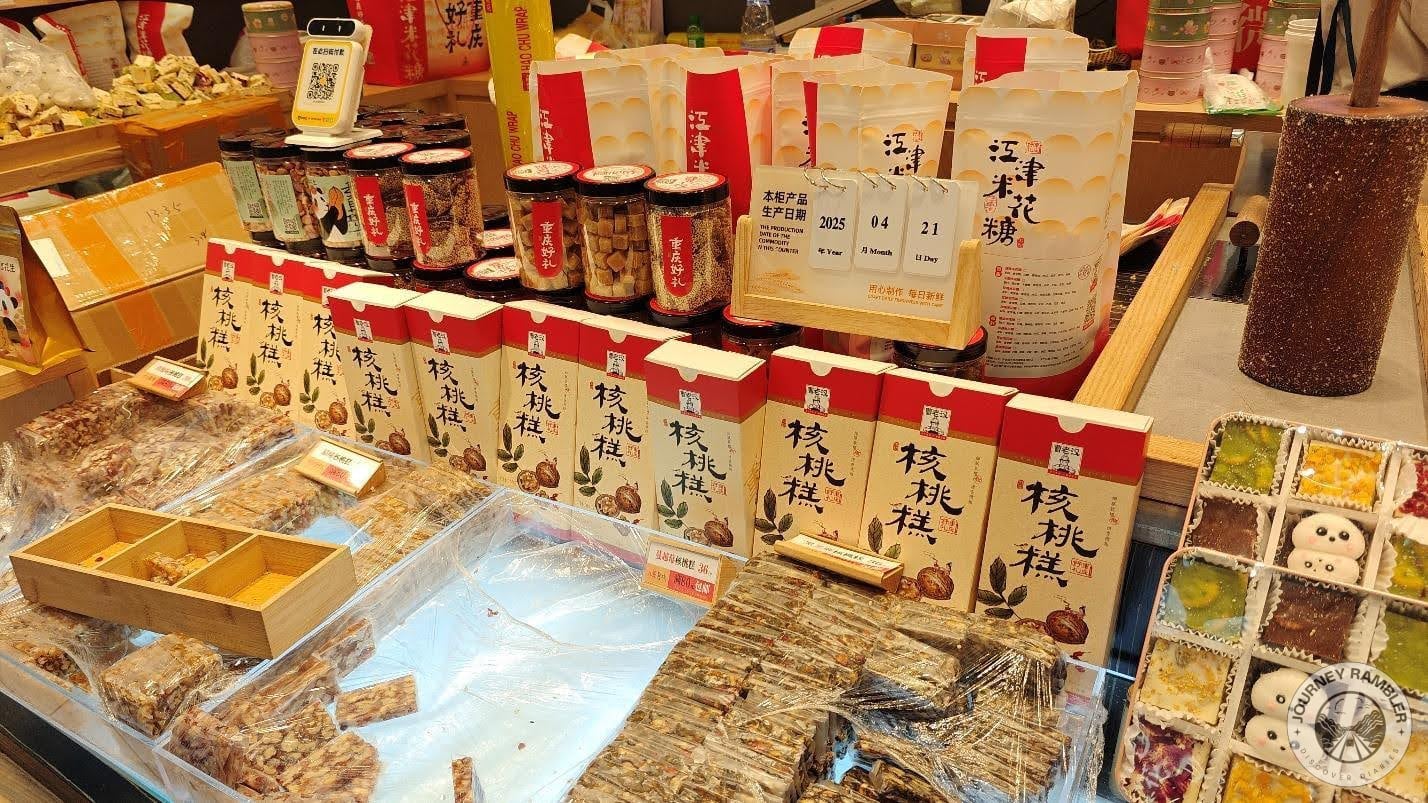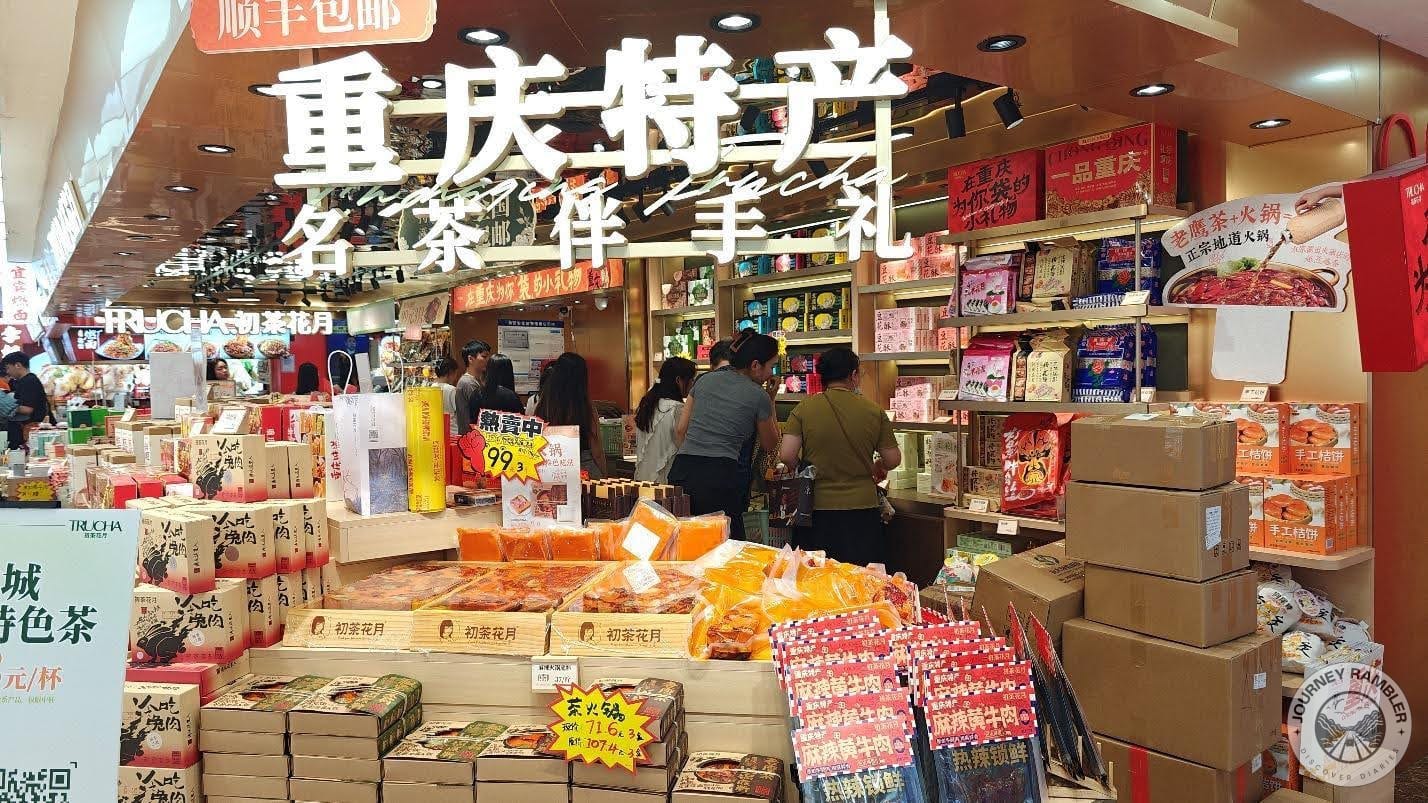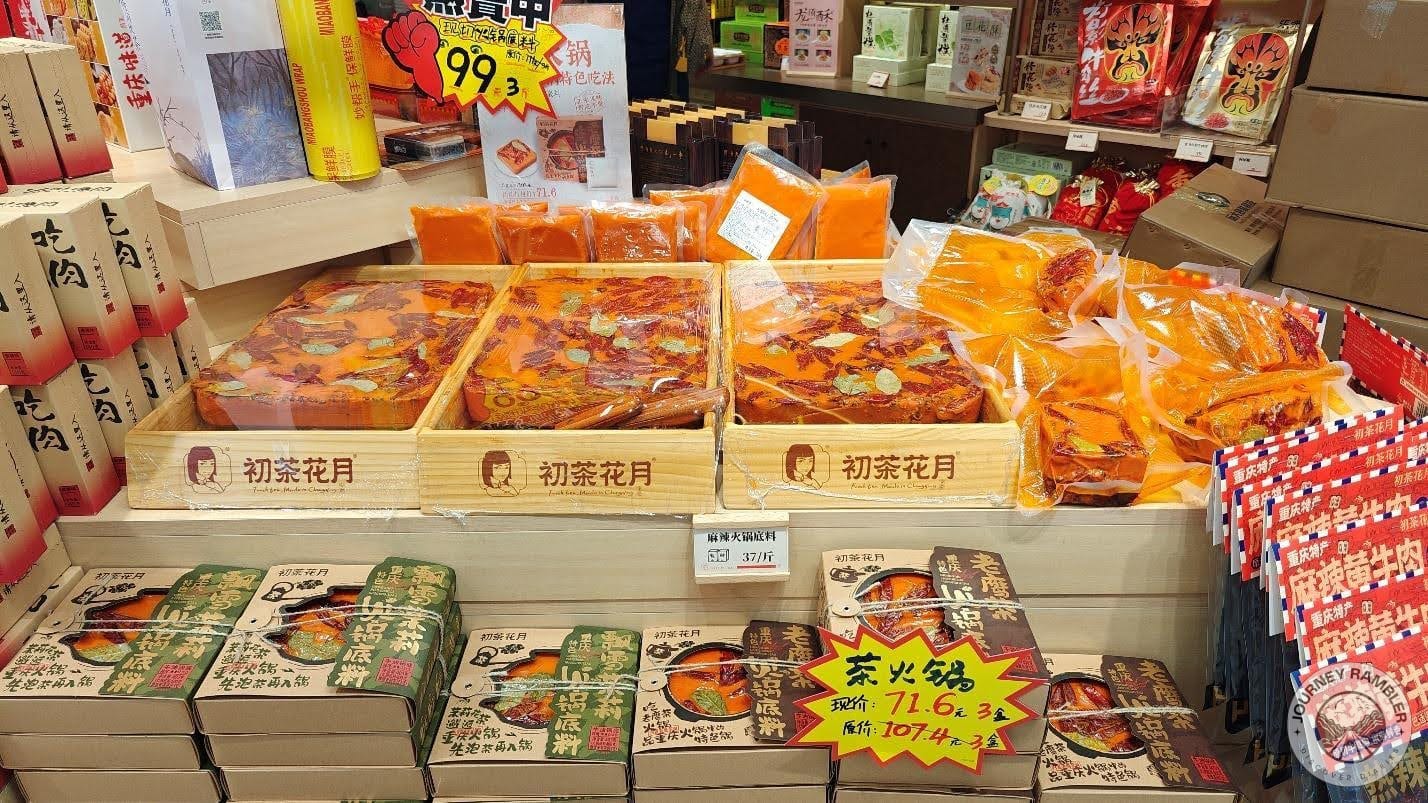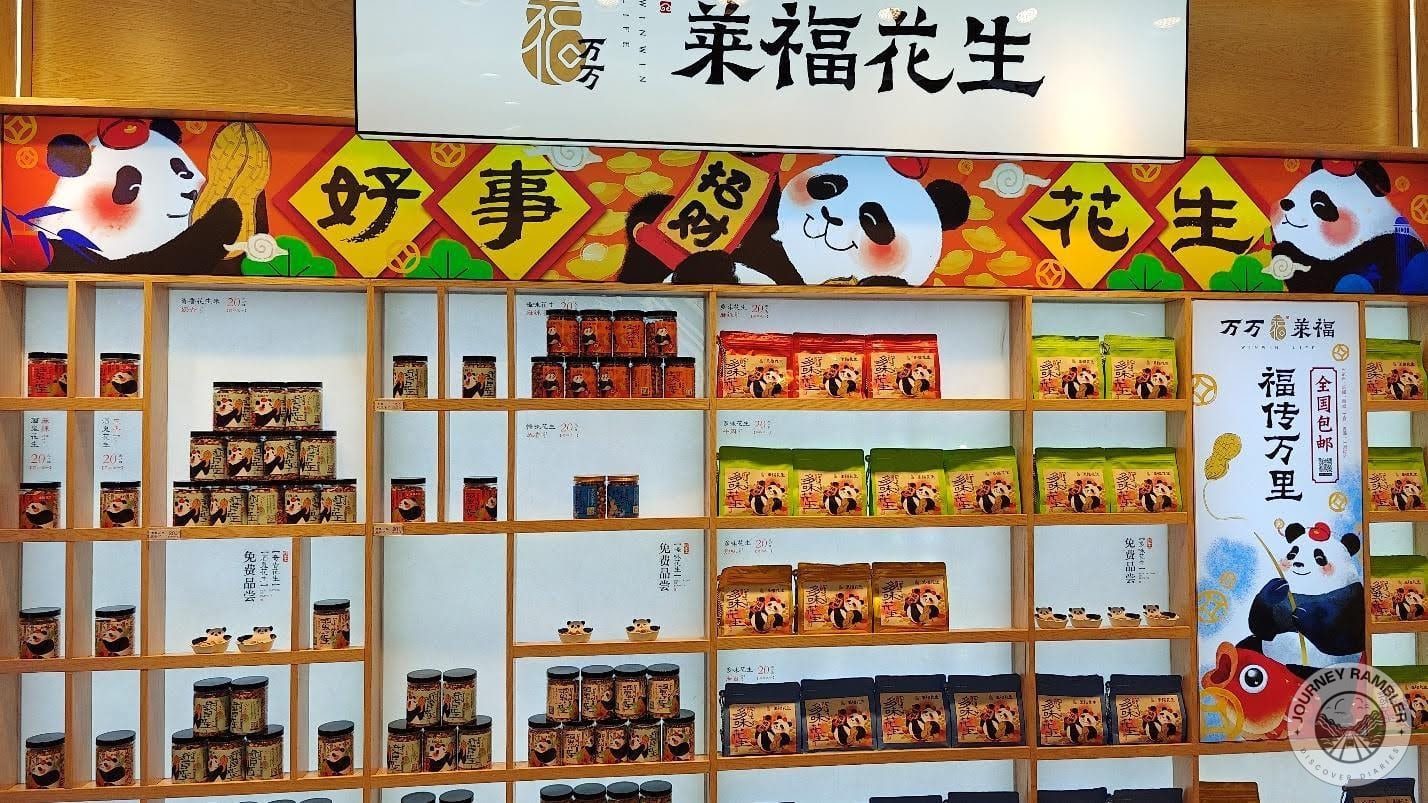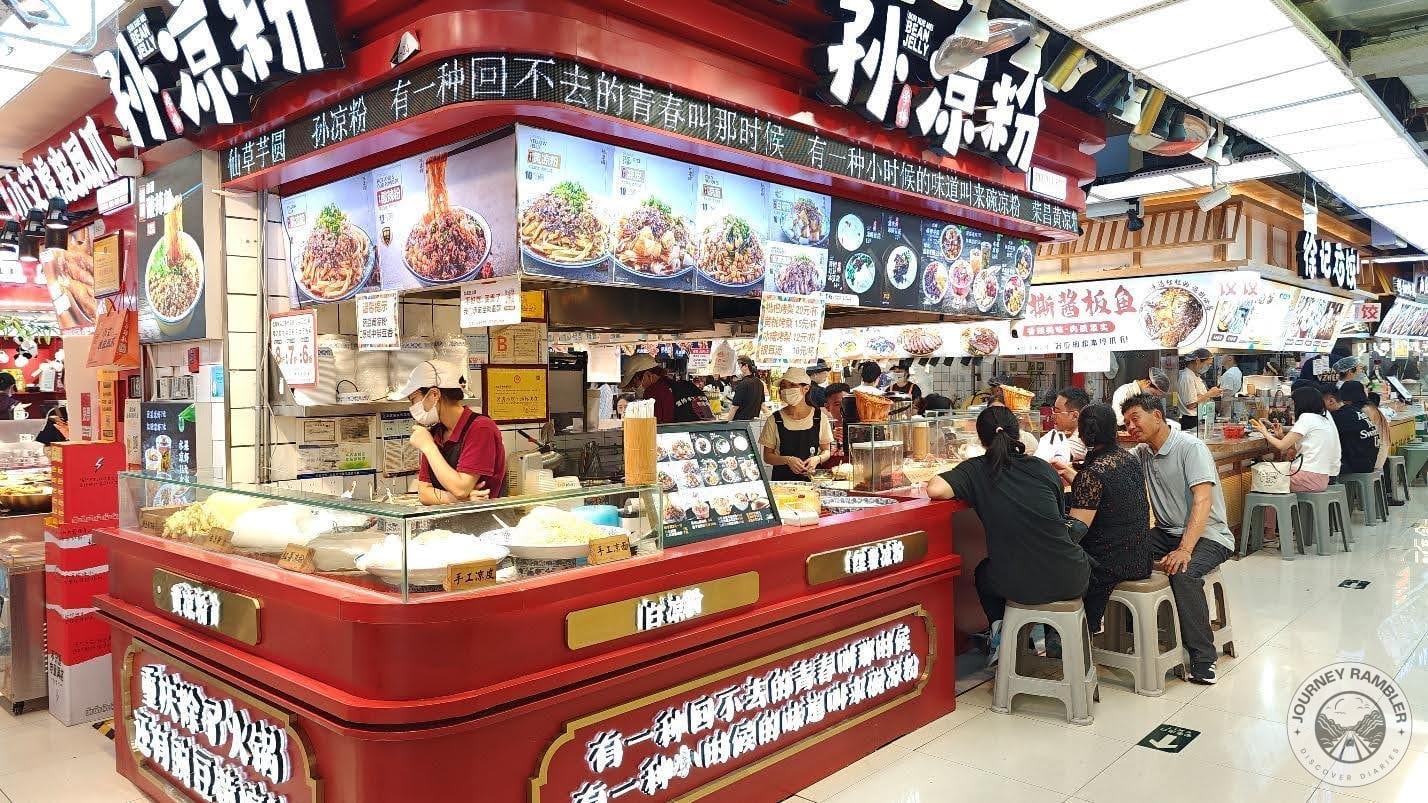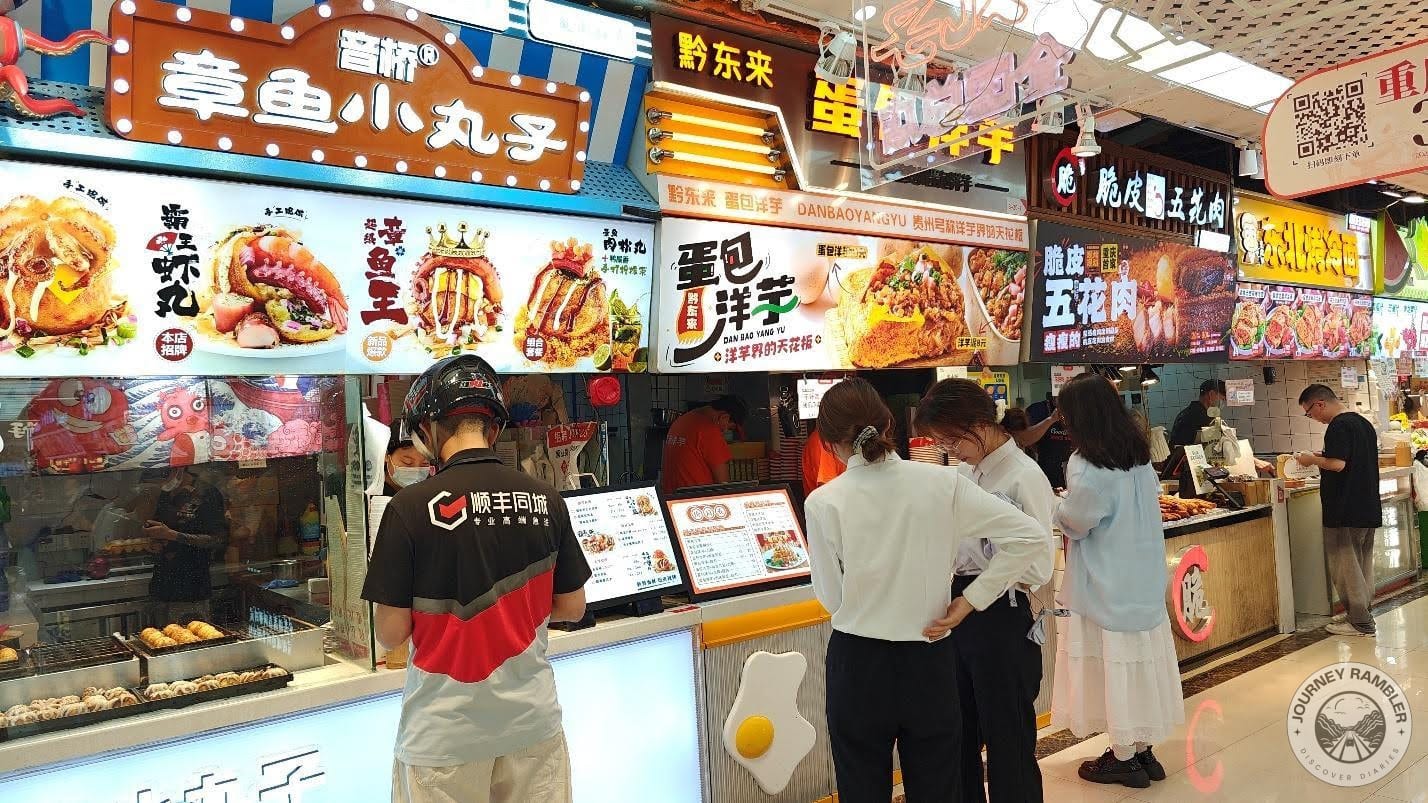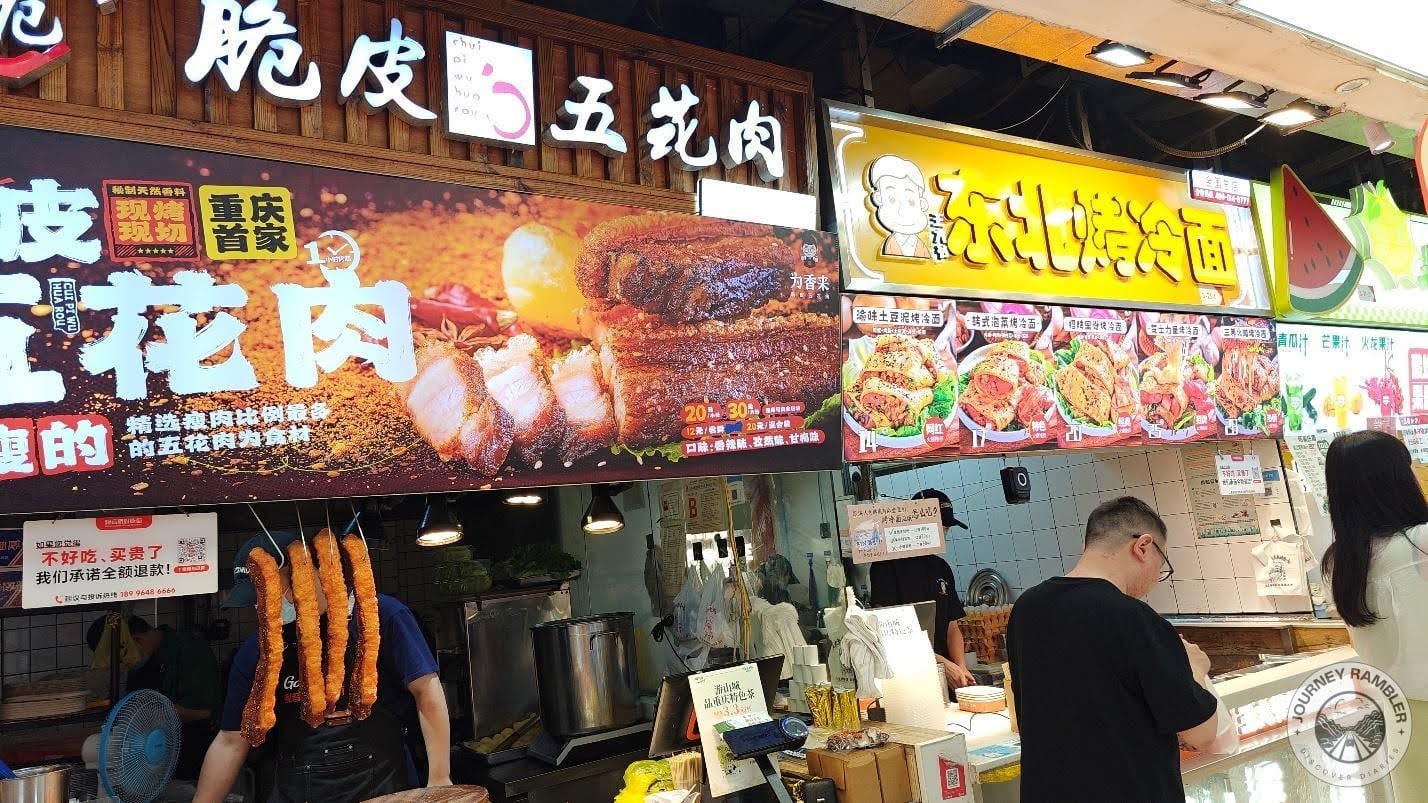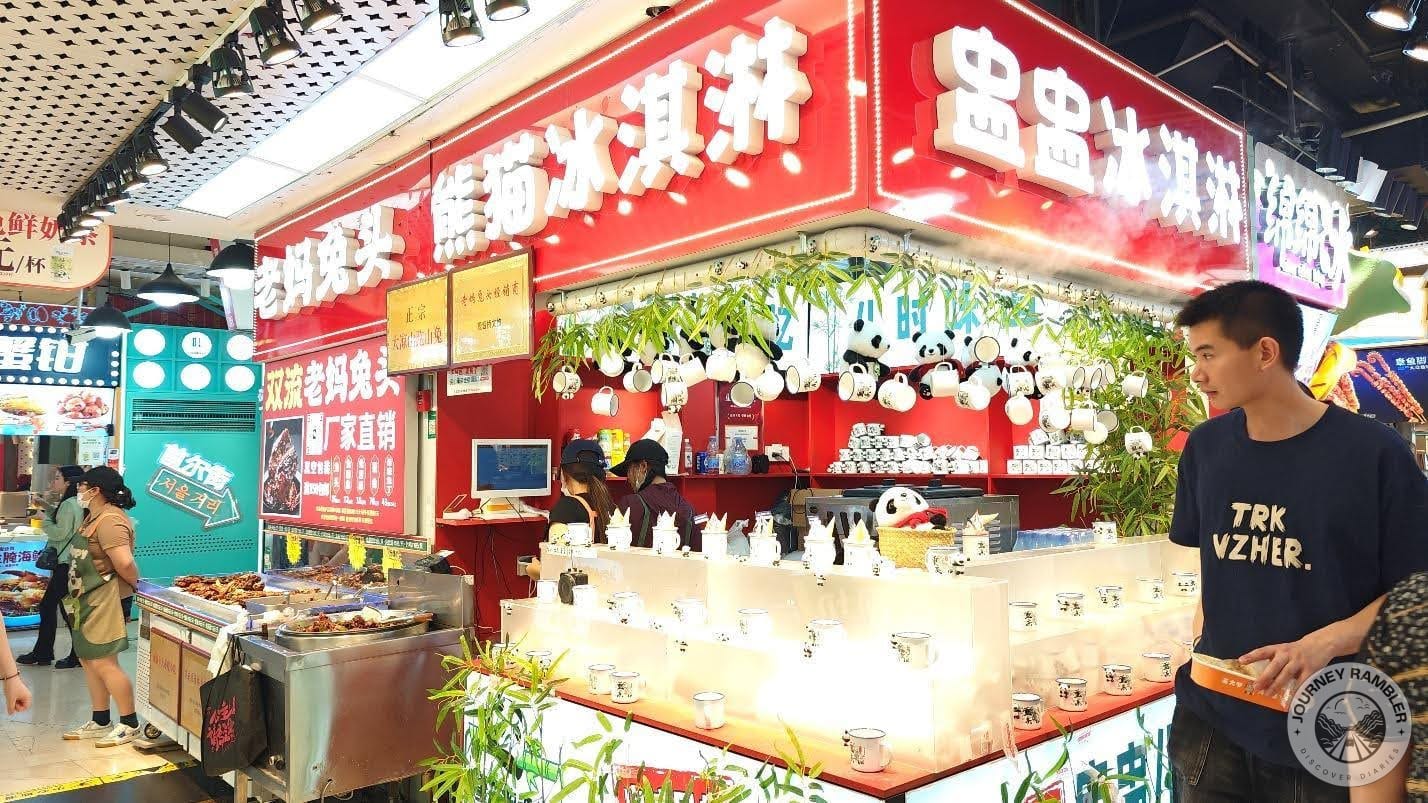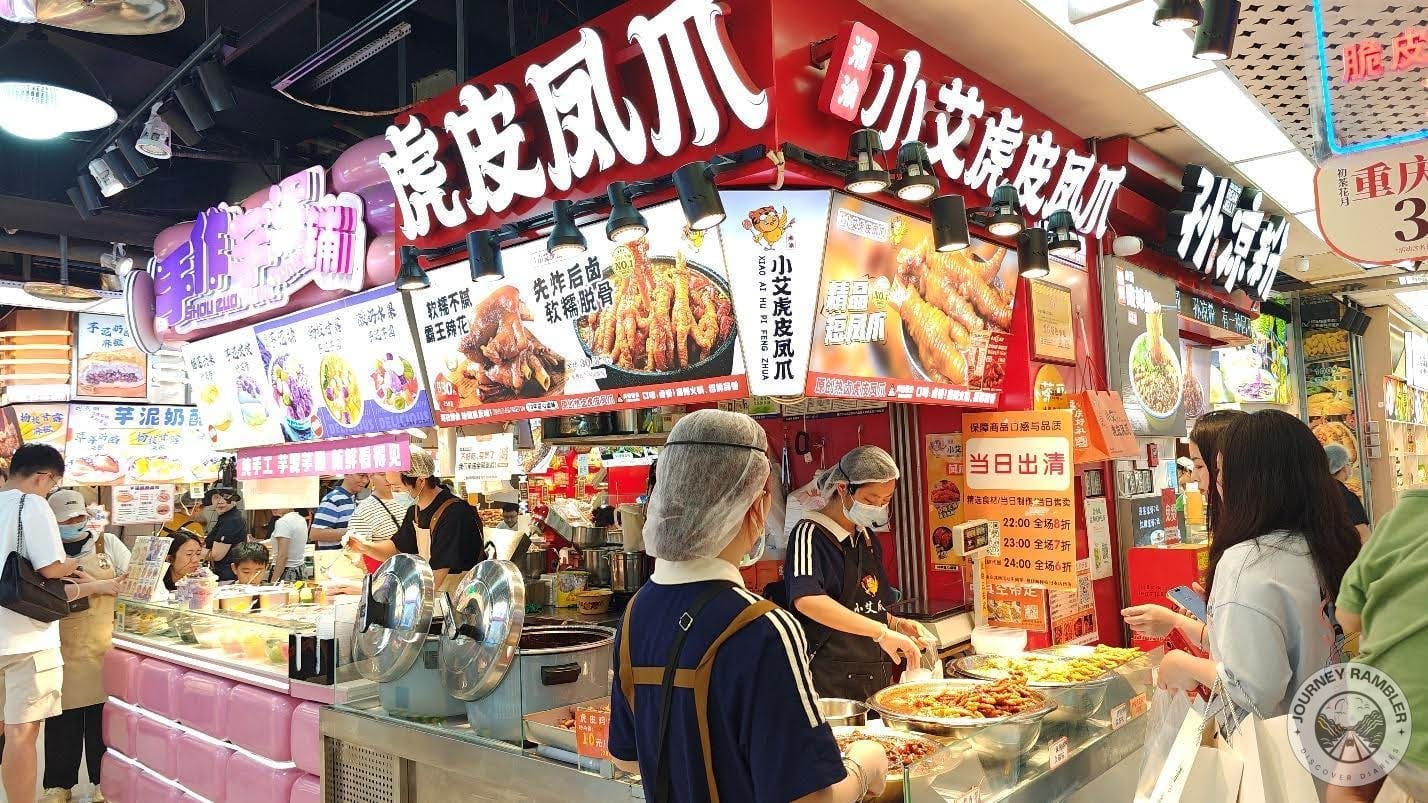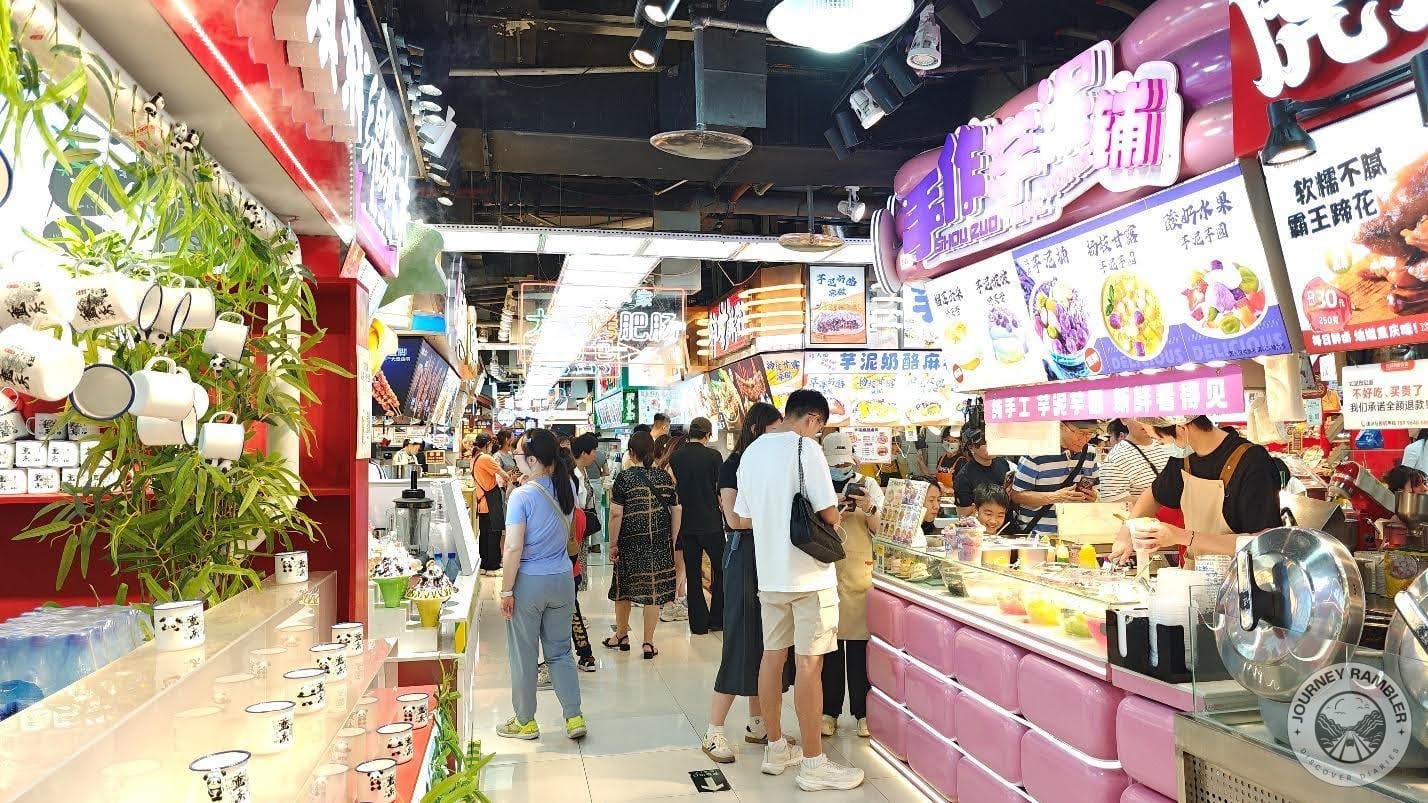If you’ve been following my Chongqing journey so far, you’d know that I’ve been to a number of places that either had great food or great views (sometimes even both). Guanyin Bridge is another of these that most people might gloss over. It’s not as popular as Bayi Food Street, Ciqikou, or Hongyadong but I think it still offers a lot in terms of nice views and food variety.
Guanyin Bridge Food Street: Where the Food Shops and Stalls Don’t Seem to End
Walking towards the Guanyin Bridge Food Street, you’ll come across this landmark that’s found smack dab in the middle of a large public square. From here, you’ll be able to access near the entirety of the Guanyinqiao area. Now you’re probably confused but Guanyinqiao and Guanyinqiao (Guanyin Bridge) Food Street are not the same. To put it simply, the former is simply the area where you’ll find the latter.
On the way to Guanyinqiao Food Street, you’ll also come across this other popular landmark here. This area is known primarily as a spot for street photography as well as photoshoots. It’s not quite to the same level as Shibuya crossing though. Like Hongyadong, I think it’s best that you come here at night if you’re after taking photos.
So I finally got to Guanyinqiao or Guanyin Bridge Food Street and surprisingly, there isn’t a bridge here. Joking aside, it does feature a lot of food stalls and establishments similar to Bayi Food Street. Additionally, there were also plenty of people when I got here though the crowd wasn’t as large as the one I encountered in Hongyadong.
If you’ve been reading my write-ups of Chongqing thus far, then you’re probably familiar with the municipality’s love affair with hotpot (another place which serves good hotpot in this city is Erchang Lao Hougou in Testbed 2). What you might not know is that Chongqing cuisine also features other styles. This particular shop is called Shanchengji and it specializes in Jianghu Cuisine. This style is essentially still under Chongqing cuisine but it’s focus is on spicy and numbing stir-fried dishes.

free chongqing itinerary
Visiting Chongqing?
Get my original 4–5 day, 13-page Chongqing itinerary in PDF format, based on my real trip, with many photos, hotel, and food tips. Enter your email to receive it free.
We won't send you spam. Unsubscribe at any time.
Speaking of stir-fried, this stall offers noodle dishes that you can also expect to have the spicy and numbing flavor profile that Sichuan and Chongqing cuisine is known for. Another thing that you’ve probably noticed by now is that the shops here provide their own seating unlike Bayi Food Street’s shared dining area.
Now here’s something that you probably don’t see on a daily basis: frog dishes! Yes, you read that right. This is a shop that offers a variety of spicy and numbing dishes with frog as the main ingredient. I’m not sure what type of frog they used here though and I didn’t bother to ask as I’m not really a big fan of the little amphibians.
Chongqing Hotel Recommendations Based on My Own Stay
🔹 Ascott Raffles City Chongqing
🔹 Westin Chongqing Liberation Square
Top Activities in Chongqing
Wulong Tiansheng Three Bridges
Banquet in Ba Kingdom Royal Feast
If you want something more familiar to your tastes, you can check out this shop called Song He Lou (if I’m not mistaken) that mainly specializes in Suzhou style cuisine. Judging from the large signage, they also seem to specialize in beef.
Here’s a look at another area here at the Guanyin Bridge Food Street. As you can see, there’s a lot of similarities here with Bayi Food Street in that there are rows upon rows of food shops. A major point of difference though is that almost all the establishments have pretty much their own space along with seating as opposed to just featuring stalls.
This establishment is the right most in the previous image and specializes in noodles (as seen in its signage). The noodle dish is specifically called xiao mian and it’s actually a local staple in Chongqing much like hotpot. As with everything here, this noodle dish is spicy and flavorful. To make their version stand out, the shop is offering larger cuts of beef.
From this view you can see the establishment directly opposite this noodle shop. If I remember correctly, that establishment sold mostly Sichuan delicacies. One dish that I remember being offered there that actually caught my eye was the Sichuan Boiled Fish.
This is what the front of the xiao mian shop looks like. As you can see, it also offers other dishes and refreshments other than xiao mian. One of the food items that stood out for me is the desert that makes use of Yangmei berry which I wanted to try out just because I actually want to know what that fruit tastes like.
Just a few steps is this shop called ‘A Hui’s Chicken Offal Hot Pot’ that, as its name implies, specializes in chicken offal hotpot. One of the shop’s guarantees is that the meat (not just the offal but the whole chicken itself) they use is fresh and that they serve it within 24 hours from being slaughtered.
Don’t want to be bothered with choosing a specific dish to order? This establishment has a special buffet that you might want to try out. According to the signage, the eat all you can buffet has 100 unique dishes, 50 snacks and drinks, and 20 desserts.
A lot like Chongqing itself, Guanyin Bridge Food Street also has multiple levels. This set of stairs leads down to another section that features even more shops and establishments offering Chongqing style cuisine.
Unlike the previous area, I think this one might have had more people. I’m not quite sure if the food here is better or if it’s just the ambiance though. It does seem like the area is spacier and the lighting actually seemed like it was better.
As for the stores and establishments that were there? They were actually quite varied though they still were mostly offering Chongqing style dishes. In contrast to the establishments in the upper area though, the shops (like the ones seen above) aren’t as large. Despite this, they still are able to offer seats for their customers as again, there isn’t an open dining area here.
One thing that really threw me off with a lot of the shops not just here but in Chongqing in general, is that they can look really cute while offering some really out there (in terms of spice level) food. This one in particular was offering Red Oil Wontons which, as the name implies, are wontons slathered with a spicy and numbing red chili oil sauce.
Another shop that looked like it was regularly getting customers was this one. I’m not quite sure if the signage here (which says ‘Bone Broth Slippery Meat’) pertains to the shop’s name or to what it was selling.
This shop is another one that sells Chongqing hotpot. If you’re not up for hotpot though then there are other dishes like Tomato Meatball Soup and Spicy Potatoes available on the menu. What I liked about this shop though was that they had one of the larger dining areas in this level.
Another quaint noodle shop that also seemed to be getting regular customers. From what I can tell, this one sells authentic Luizhou cuisine (or at least it advertises that it does) and that it’s also an established brand.
Much like the previous shop, this one called Uncle Cat’s Restaurant also sells noodles. More specifically, the type of noodles sold here are Sichuan style Xiaogou Mixian or small pot rice noodles. From what I understand the dish is popular in Yunnan province which is pretty close to Sichuan and Chongqing.
If you’re not too keen on either hotpot or noodle dishes then you might want to move your way over to this restaurant. I’m not too sure of the restaurant’s name but it does advertise that it offers dishes that go well together with rice.
Right next to the establishment in the previous image is this one that specializes in dry pot dishes. I’m not too sure with my translation but I think the shop is called Pen Yuan Dry Pot. One of the dishes that they seem to advertise is Dry Pot Beef which is beef that’s thinly sliced and then stir fried in a spicy and numbing sauce with some vegetables mixed in.
I know I’ve been saying this a lot but here’s another establishment that sells hot pot (you can check out my article about the Zhoushixiong hot pot restaurant here in Chongqing). Unlike most of the other hot pot shops we’ve come across up ’til now though, this one actually specializes in seafood. On the right, you can see a large ad for Thai Tom Yum Kung (Tom Yum Soup) which probably has a Sichuan/Chongqing flair to it.
This area was a lot more cramped thanks in large part to the crowds that were buying from the stores that can be found here. In the image, you’ll find one selling tea with the stall just right next to it selling soy roasted duck. Perhaps the most popular stall here though, might be the one selling souvenirs (to the right of the soy roasted duck stall).
I guess the souvenir items here could also be a reason for the crowd of people you’ll find in this image. There’s really just a lot of cool stuff here that even I was tempted to get some for the folks back home.
Aside from dry pot and hot pot, Chongqing also boasts of these iconic snacks that also happens to be a great souvenir. Originating from Chongqing’s Jiangjin district, the snacks being prepared in this image are called Jiangjin rice candy. This was one of the few food items here that didn’t have Sichuan peppercorns as a major ingredient and it actually somehow got a lot of attention from the buyers here.
This is a closer look at the souvenirs and the guy who was preparing the Jiangjin rice candy. If you’ve ever seen wagashi in Japan then you’re going to find the items on display look very similar. Perhaps these aren’t as popular but they sure look delicious.
A little to the right is another set of souvenir items that had me drooling when I saw them. As you can see from the image, it wasn’t just me who wanted to give these walnut cakes a try. When I checked, one of the trays holding slices of this cake was almost gone thanks to the number of people who had this in time for the 3.3 sale.
Of course, since this is Chongqing, there is a section of this area that sells what else but hot pot! More specifically, you’ll be able to buy the hot pot soup base. You can start up your hotpot, pour these in, add some vegetables if needed, then enjoy the spicy flavor that has become so emblematic of Chongqing and Sichuan.
A closer look at the hotpot soup bases being sold here. As you can see, the soup bases here are sold at a varying number of sizes. If you’re like me and come here close to the auspicious double digit sale days, you’ll find the soup bases here being sold at a significant discount.
Nearing the end of my walk here I came across this stall selling mostly processed peanuts. Most people talk about Sichuan peppercorns as the quintessential ingredient in Chongqing cuisine. That said, peanuts also still play a major role in Chongqing cuisine as an ingredient that brings dishes together.
If you’ve been keeping track, this is what? The 7th noodle dish shop here in Guanyin Brdige Food Street. I already expected there to be a lot of hot pot and noodle dishes here but I was genuinely shocked how many there actually were.
If, like me, you were tired of seeing noodles and hot pot, then you’ll absolutely love seeing this section of the food street where smaller establishments offering eclectic dishes can be found. In this image you’ll see a stall with some takoyaki balls being cooked. For those not familiar, takoyaki came from Japan so it’s pretty brave of the owner putting up his stall smack dab in a municipality where that country’s really not received all too well.
Now this was something that I was really looking forward to when I came here. Crispy pork! I think this was one of the very few shops that offered this at that time and boy does their pork look as scrumptious as they looked crisped up.
So I might be mistaken but I think this is the only place that sold braised rabbit heads. Yes, they look as gnarly as they sound so I didn’t take a close up picture of them. Kidding aside, it really was kind of surprising that the rabbit heads were actually sold together with hard drinks as you’ll definitely one to down one of these delicacies.
Opposite the ice cream shop that also sold those rabbit heads from the previous image is this stall that was selling braised chicken feet and pork trotters. Next to it, is another stall that sold what looked to be desserts.
Man, the food shops/stalls here just didn’t seem to end (very much like Bayi Food Street). While it definitely looks like a tourist trap, I was surprised to find that a lot of the stalls here are actually kind of fair when it came to their pricing. While I don’t think this is a must-visit location, I do think that if you’re close by then you definitely need to check it out. Anyway, what about you? Ever been to Guanyin Bridge Food Street? Share your sumptuous meals and experience with us in the comments section!

